Birthplace of the Kelpie, friend of the Koalas












We met this Koala walking down the street in Casterton. I think WordPress has removed the free version of video sharing so here’s a link just in case.
Birthplace of the Kelpie, friend of the Koalas












We met this Koala walking down the street in Casterton. I think WordPress has removed the free version of video sharing so here’s a link just in case.
AKA. city of megamalls
.
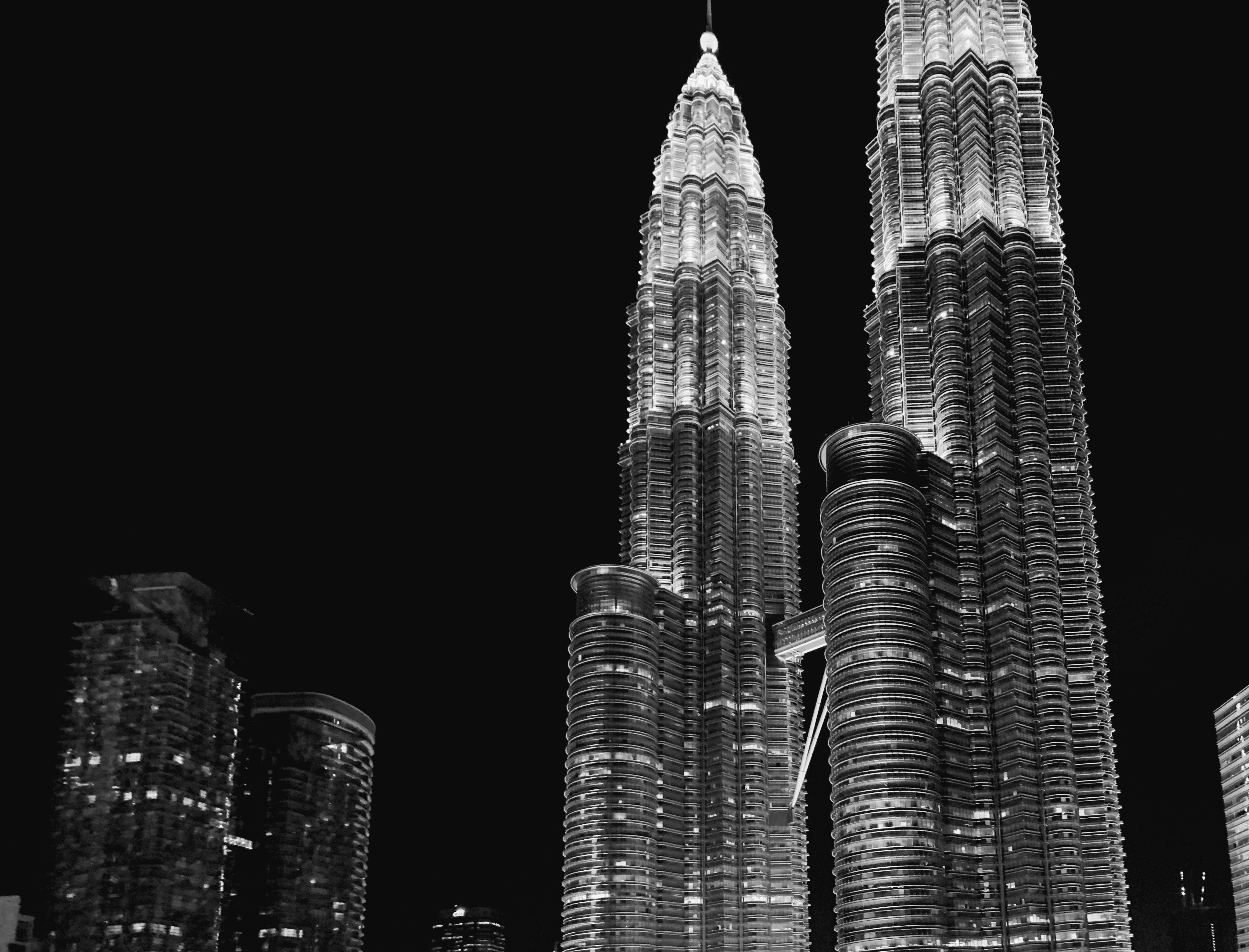
.
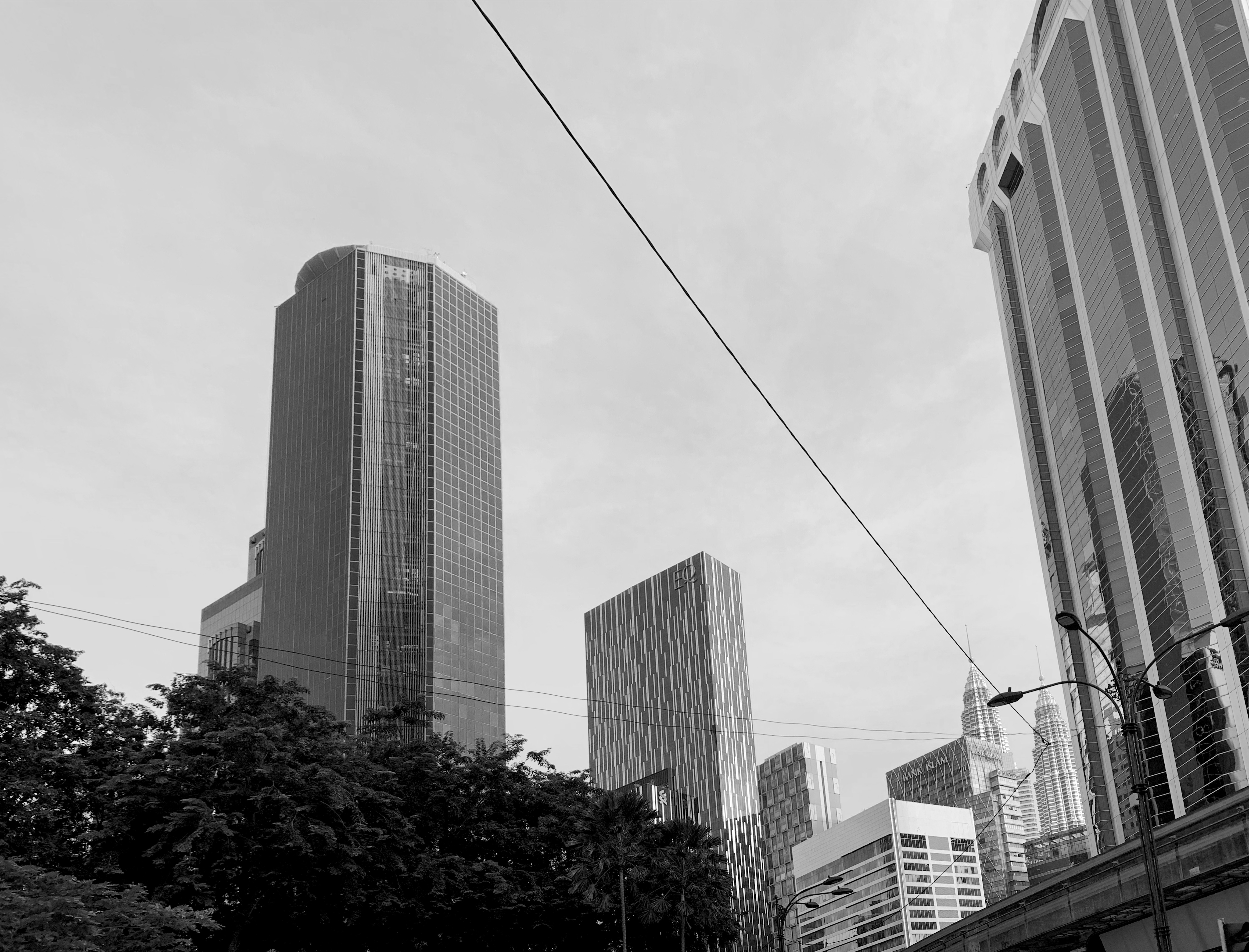
.
 .
.

.
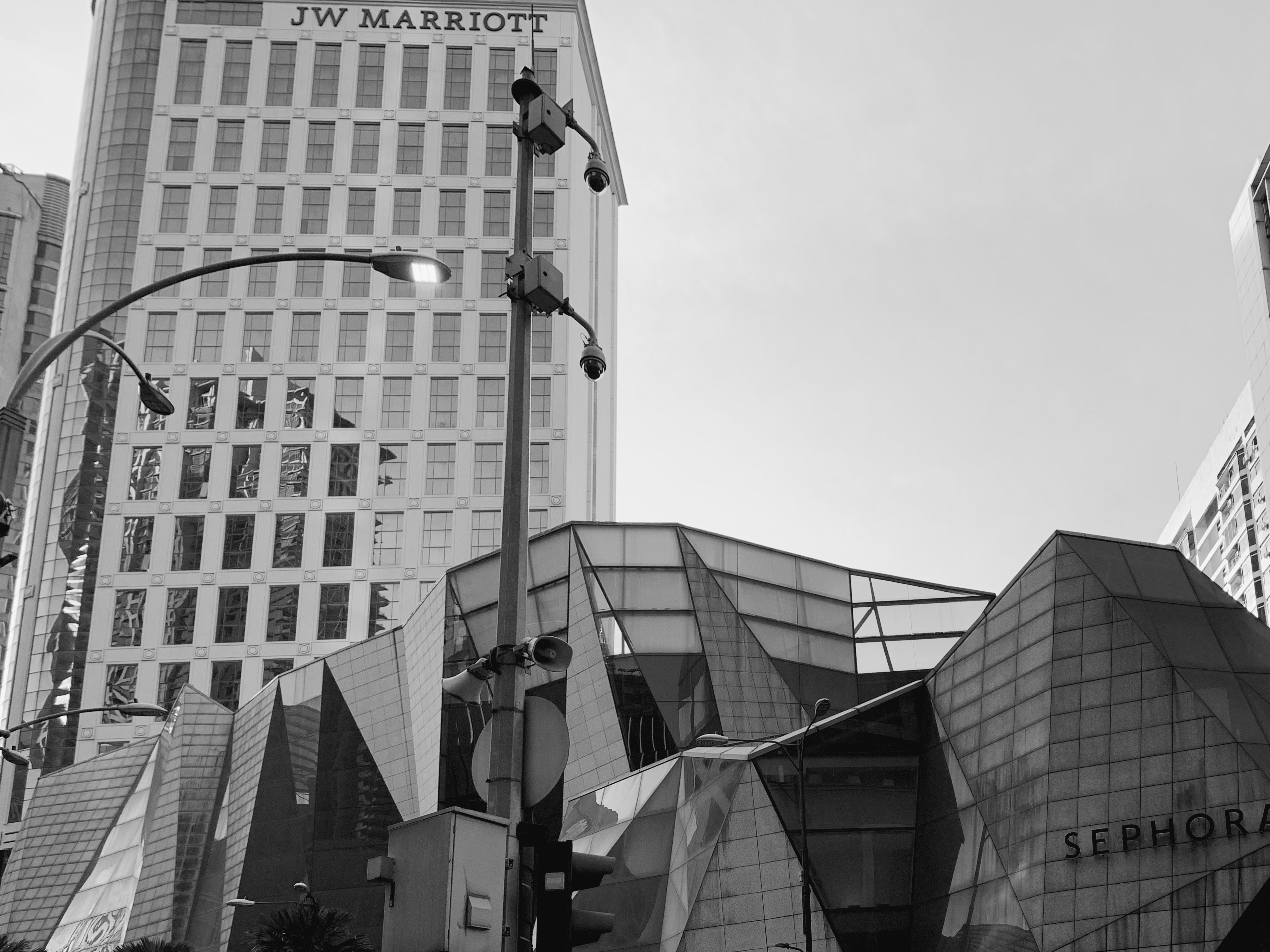
.
 .
.

.
 .
.

.

.
 .
.

.

.
 .
.
 .
.

.

.

.
 .
.
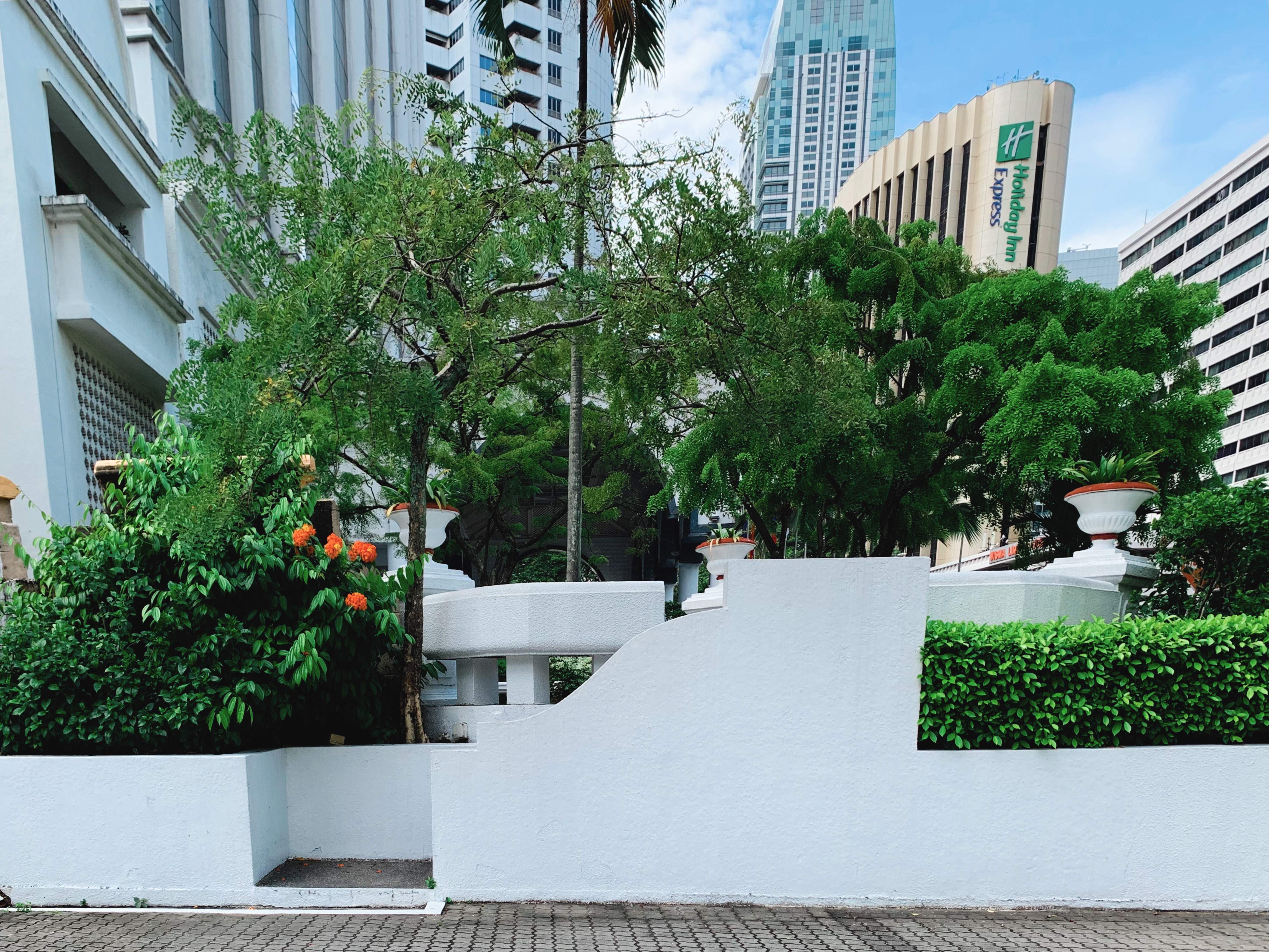
.
 .
.
.

.

.

.
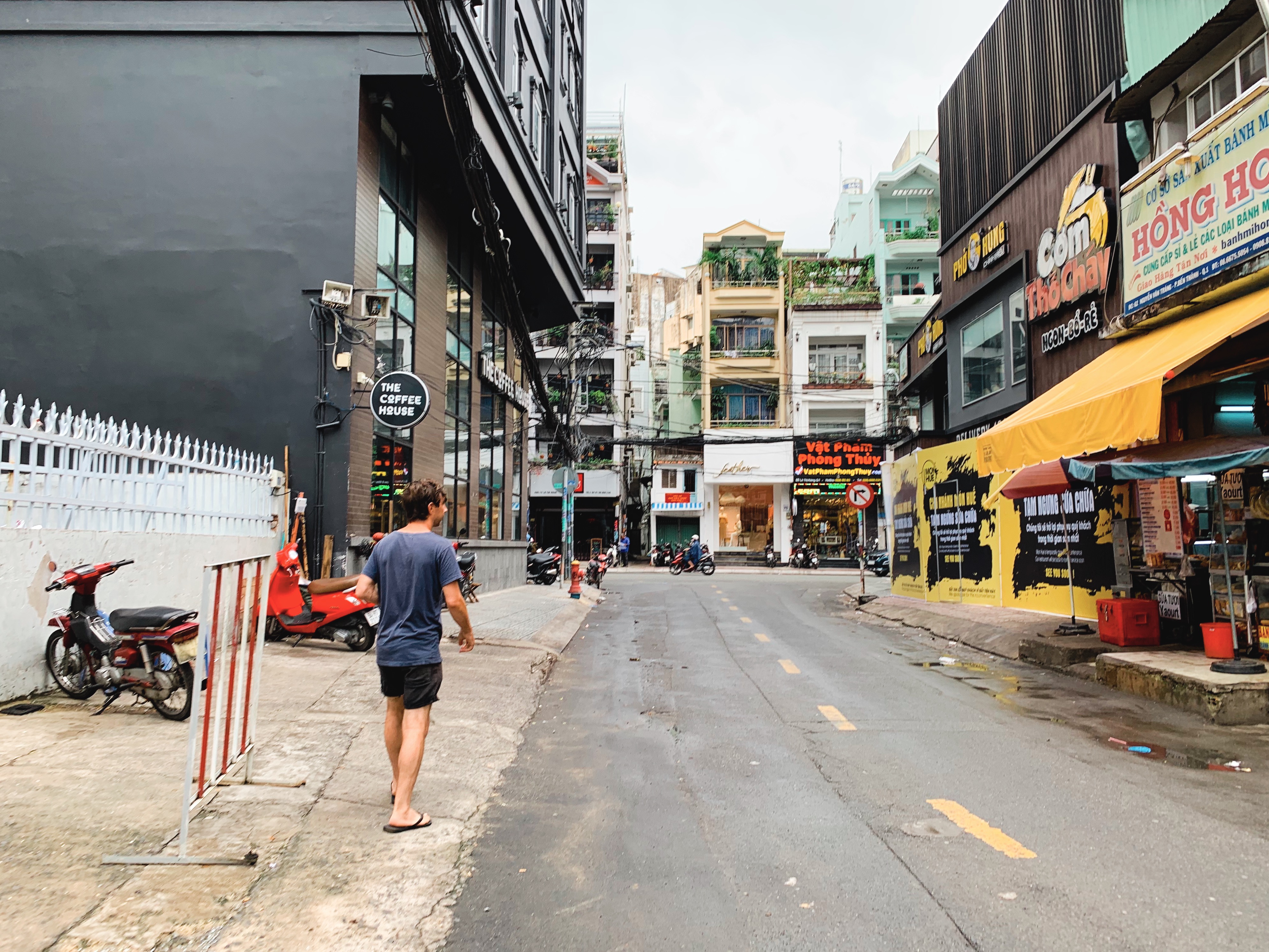
.

.
The War Remnants Museum in Ho Chi Minh City was a great way to bookend our learning about the wars in Vietnam. The exhibition on the inside showcases the photojournalism throughout the second Indochina War, and the outside is a site where prisoners of war were kept that you can walk through.
.

.

.

.

.
.

.

.
This is a bit of a perspective warp, as there is now a wall in between the cells. I was basically standing over the first two in this picture, the others are painted on the wall to show what it was like. The cells are below your feet through the metal grates.
I was up here for a while until I noticed the ceiling was covered in bats who then started to swoop me!
.
.
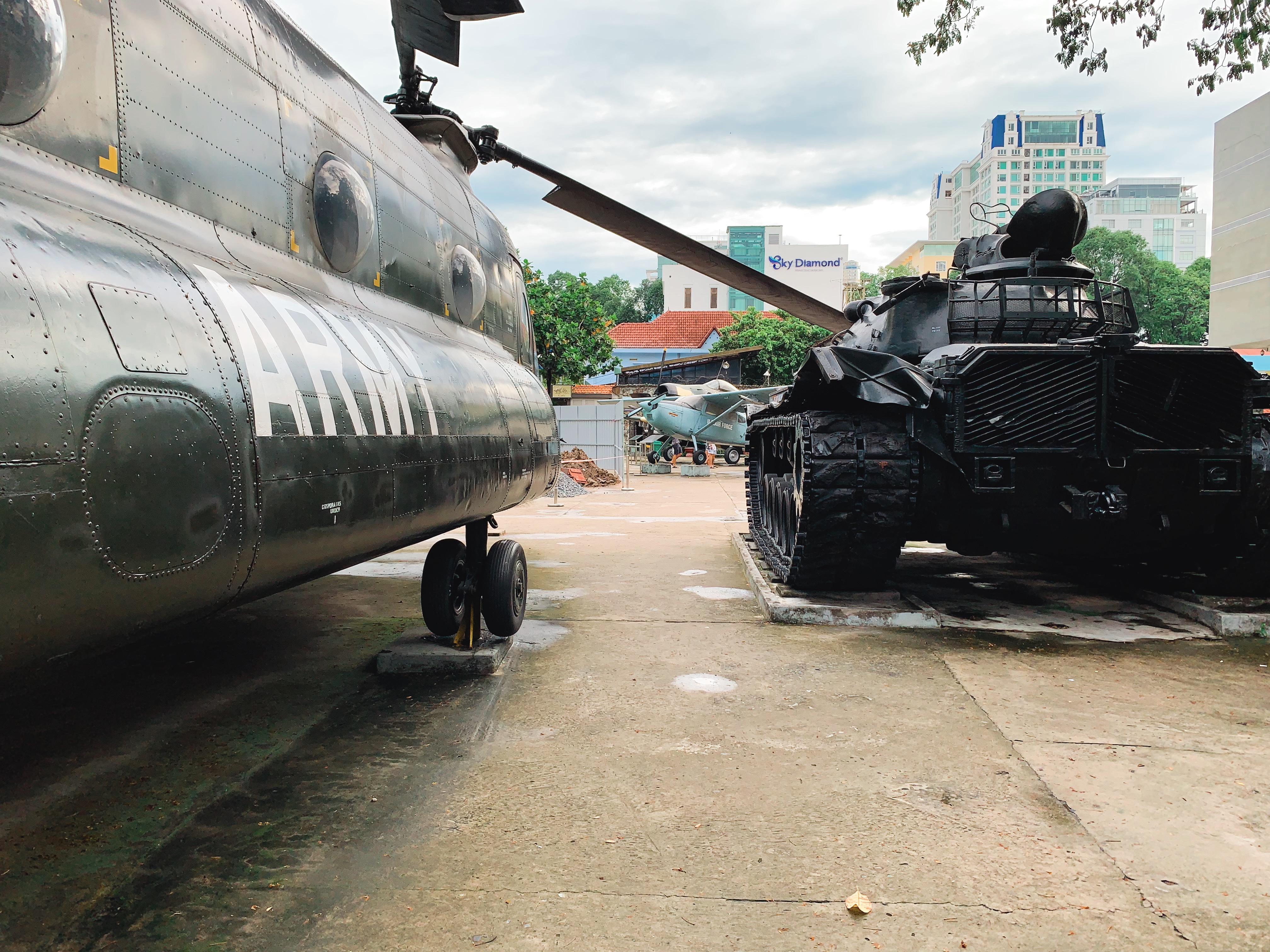
.

Different snails
.
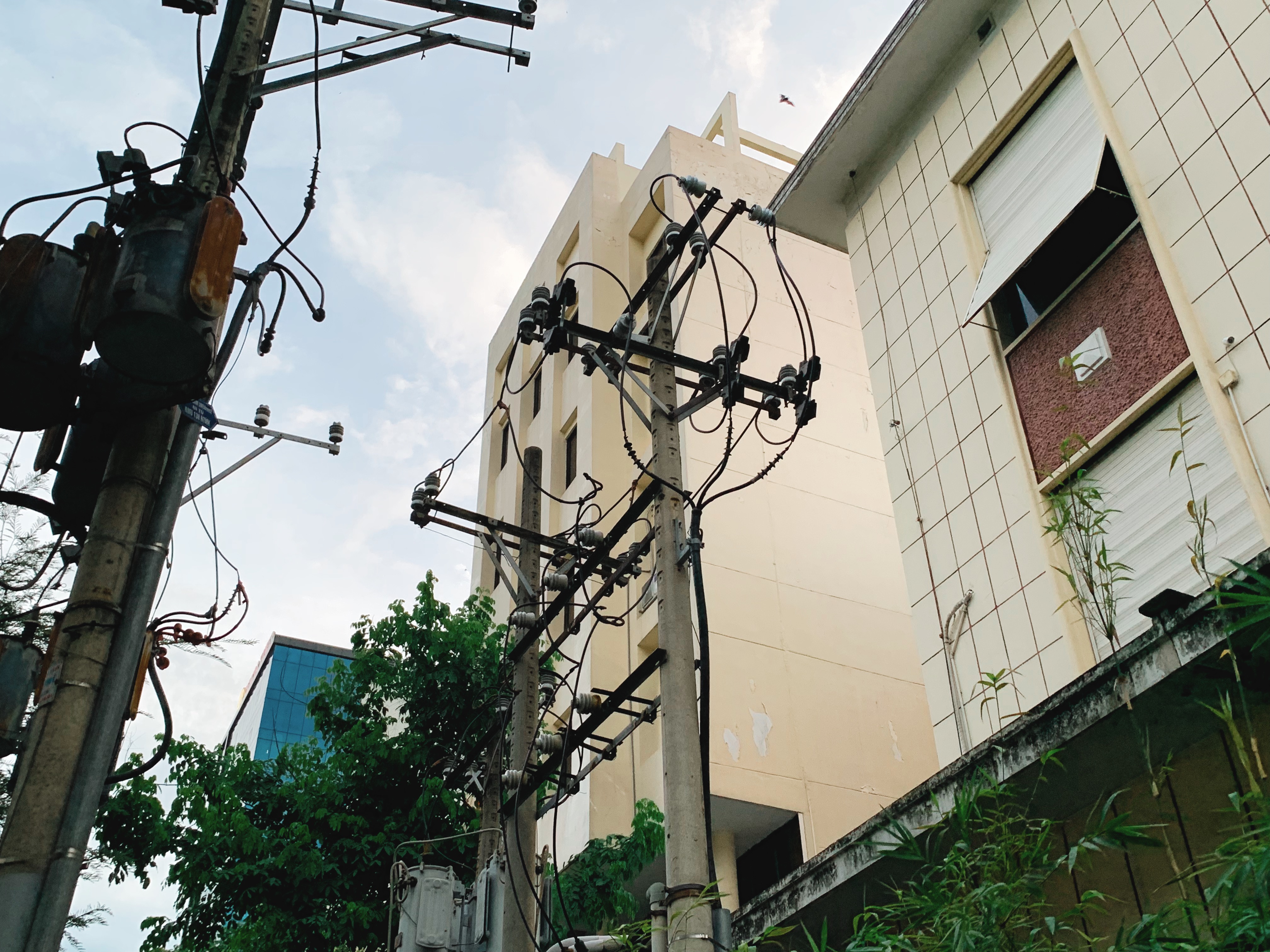
.
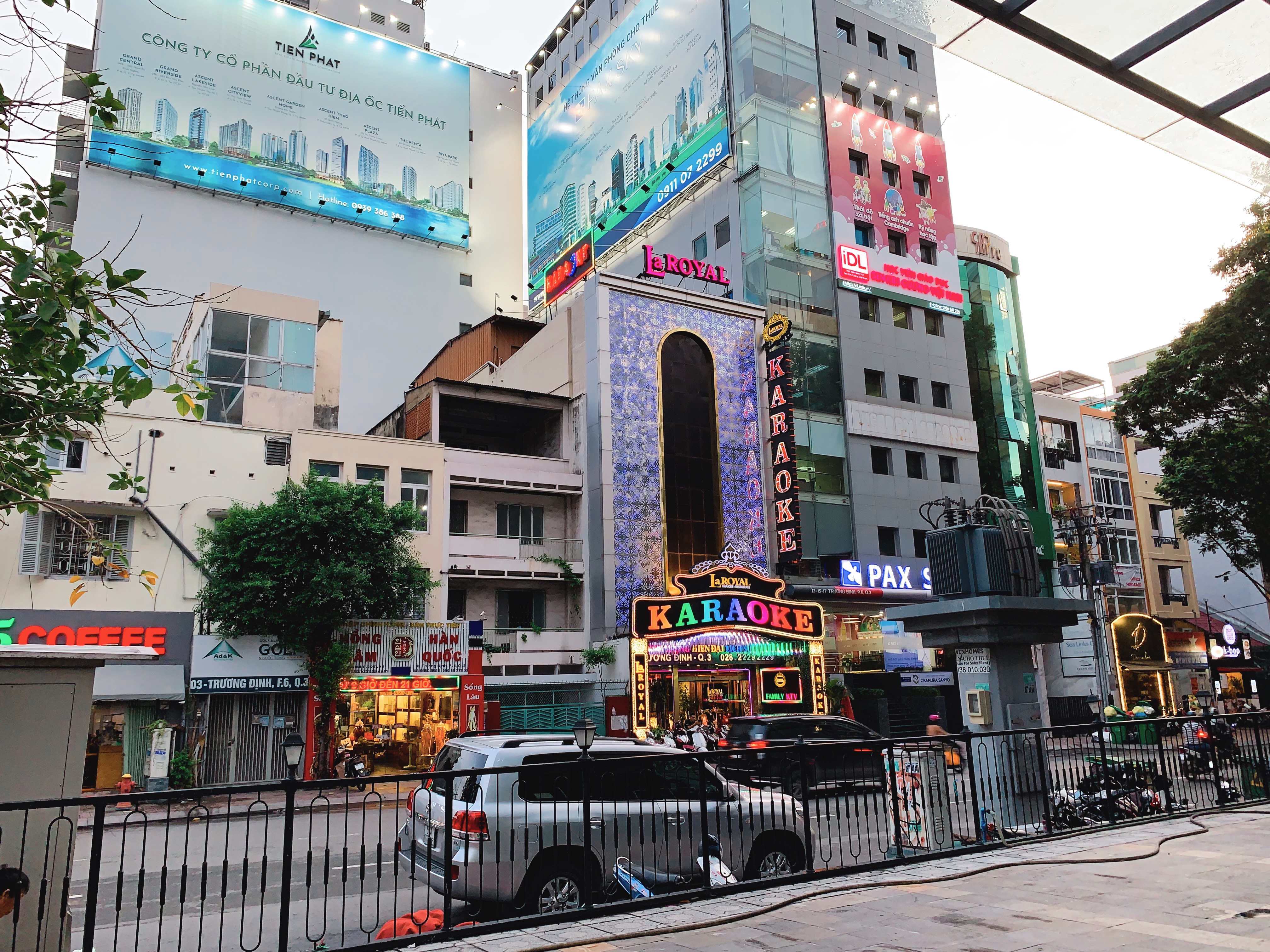
.

.

.

.

.
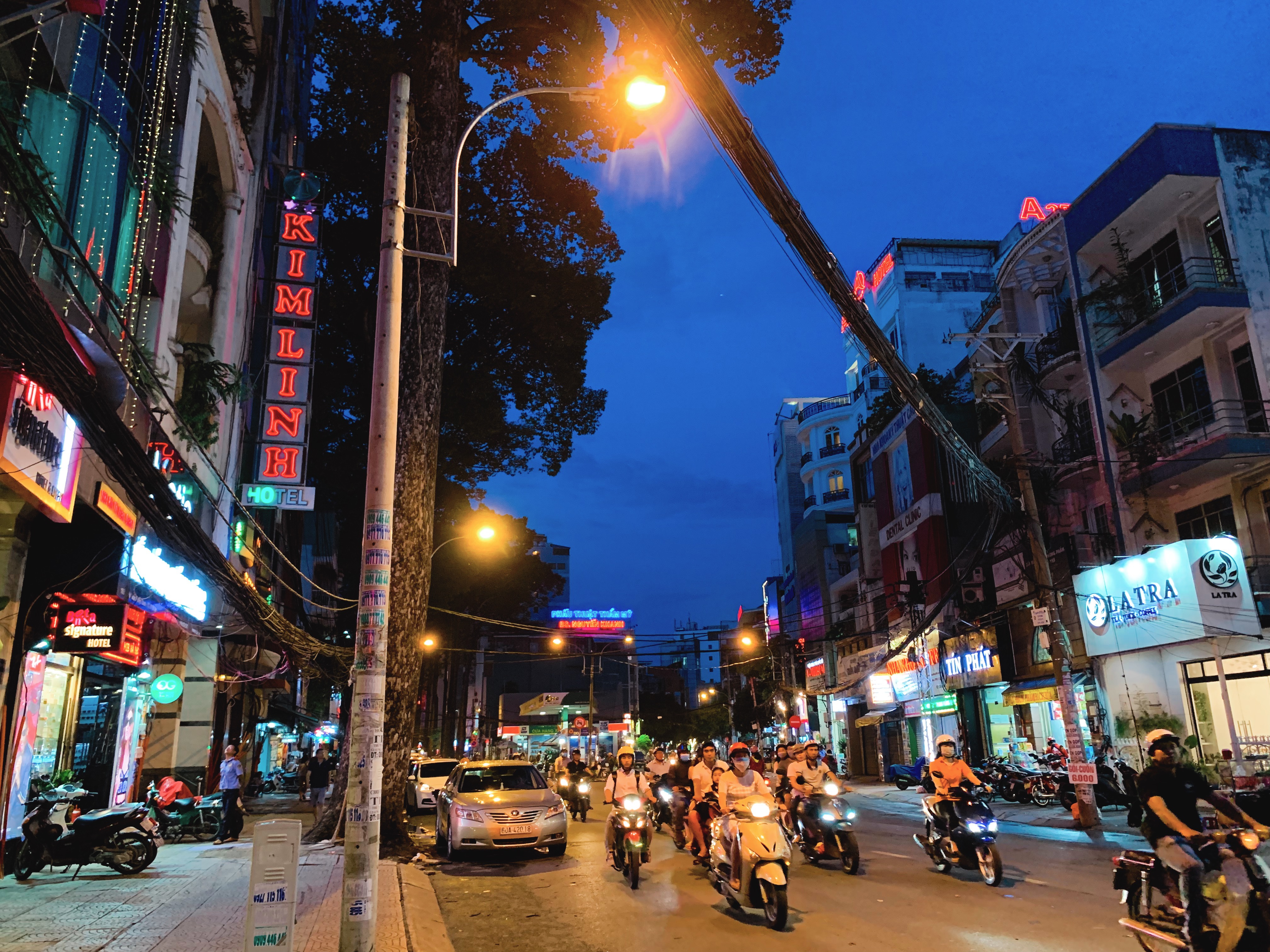
.

.

.

.

.

.

.
Bun Rieu Cua from a street vendor
.

.

.

.
Contemporary Art at the HCMC Art Factory
.

The most polite sign I have ever seen in my life
.

.

.

.

.

.
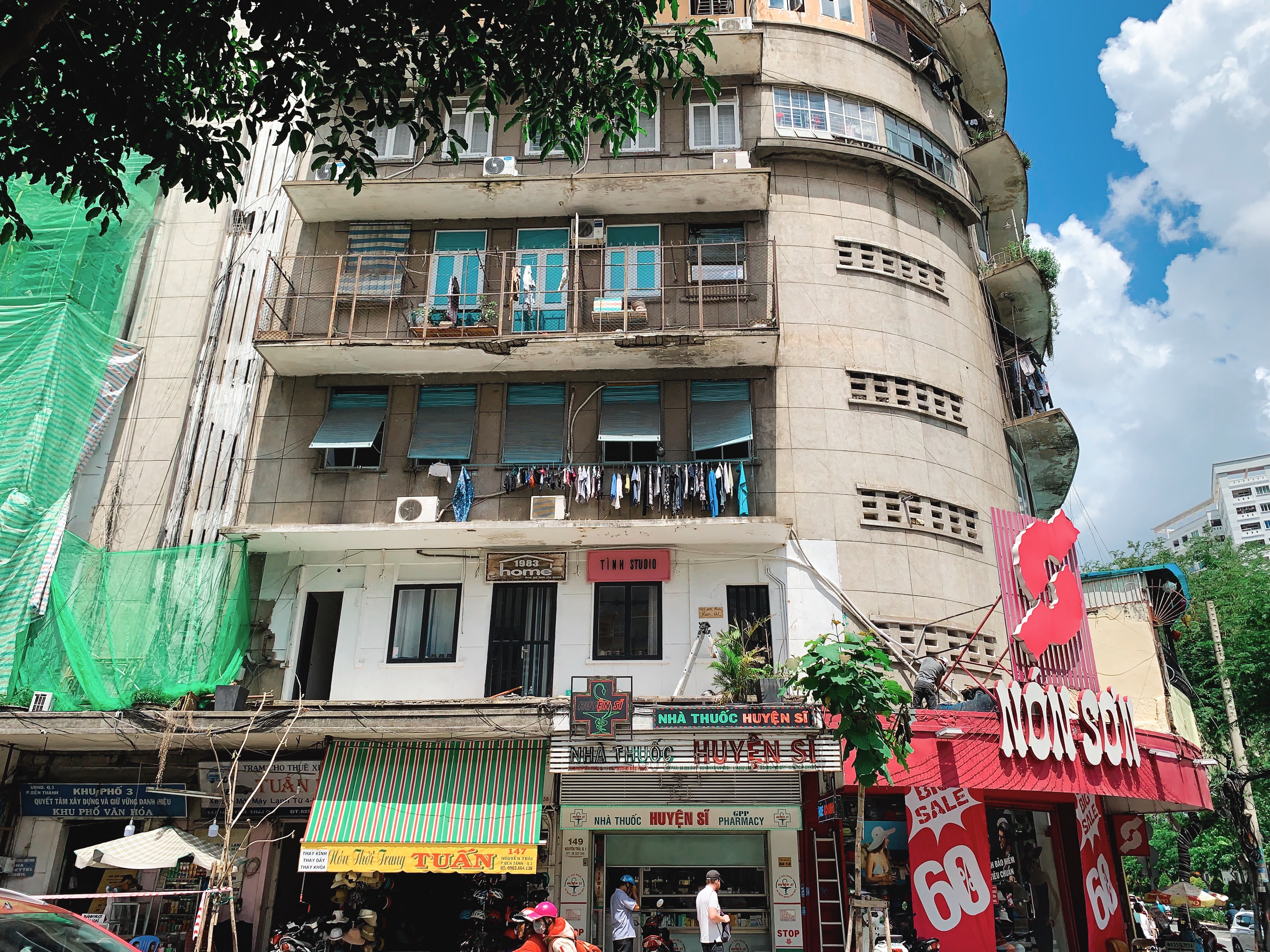
.

Mi Quang!
.

.
After seeing the beach at Hoi An we decided to do a dive by view of Nha Trang and head for the mountains. 1500 m above sea level is beautiful Da Lat, yet another city with completely different architecture and vegetation, this time nestled in a huge pine forest.
.

.

.

.

.
Construction in Da Lat. The houses all follow a similar architecture style, closer to western style homes and slightly echoing the French Provincial style in older Da Lat.
.

.
Da Lat is the city of huge hotels
.

.
Taken from the car window
.

.

.

.

.
The mess of electric and phone cables litters the city sky no matter where you are in Vietnam
.

.

.

.
We went for a paddle on one of these cheesy swan shaped paddle boats and had a romantic time
.
.

.
Rice paper rolls! Nem nuóng. I honestly thought we would eat more of these in Vietnam but here was our first proper rolls. Fried sausage and deep-fried rolled up misc other food goes in them feat. Peanut sauce.
.

.
The pine trees around Dalanta Falls. We unfortunately weren’t dressed correctly for all the activities you can do here- zip lining, rock climbing, kayaking… but we did go on the roller coaster. I would have said no if I had known that’s what I was buying a ticket for but it’s probably for the best because I did enjoy experiencing nature while being hurtled through the air at high speed. We had our picture taken while going down, Trav will show you a hilarious picture of me looking stoked, contemplating my near-death.
.

.
This is the death trap
.
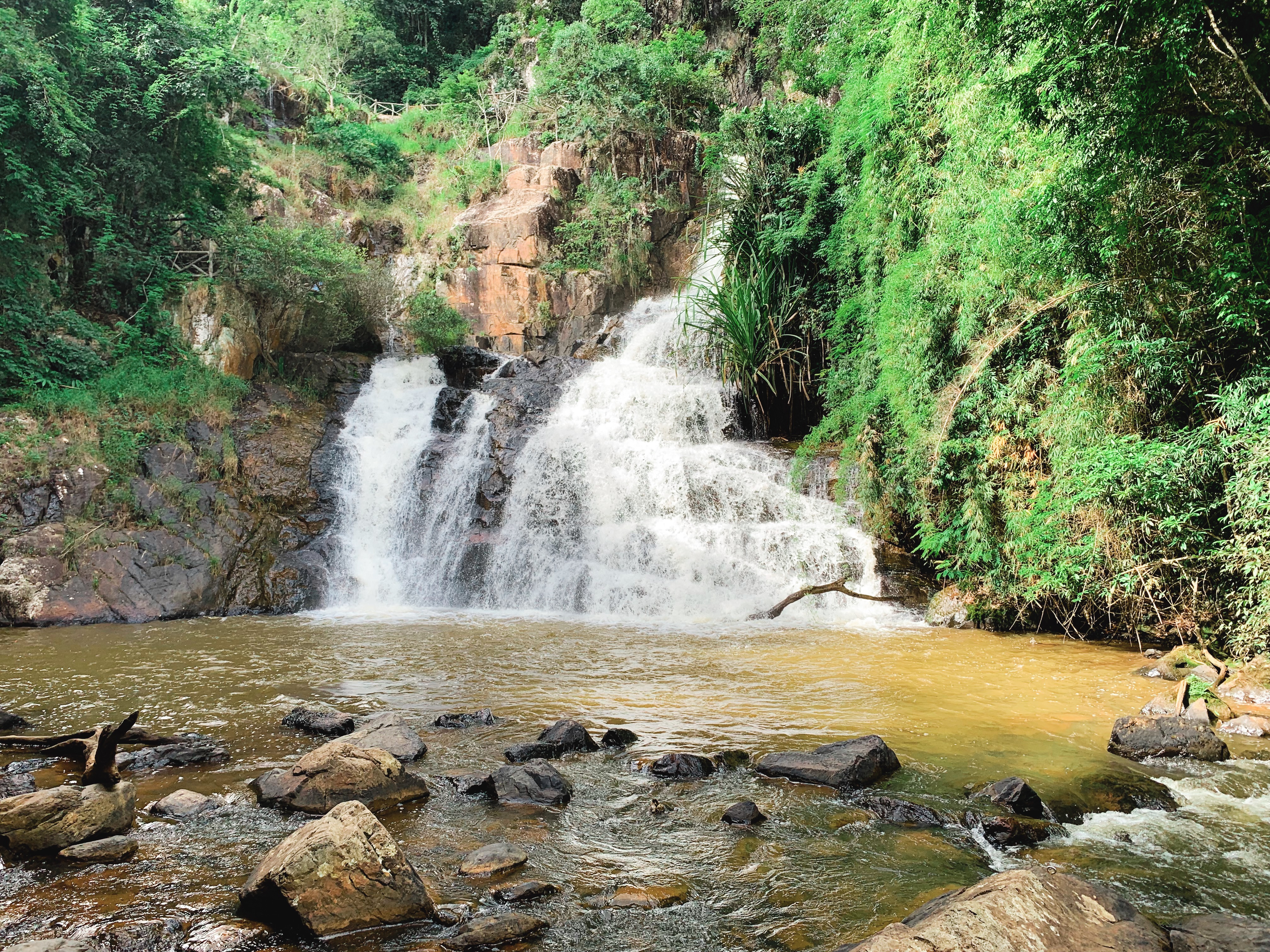
.
The sights you see at high speed
.
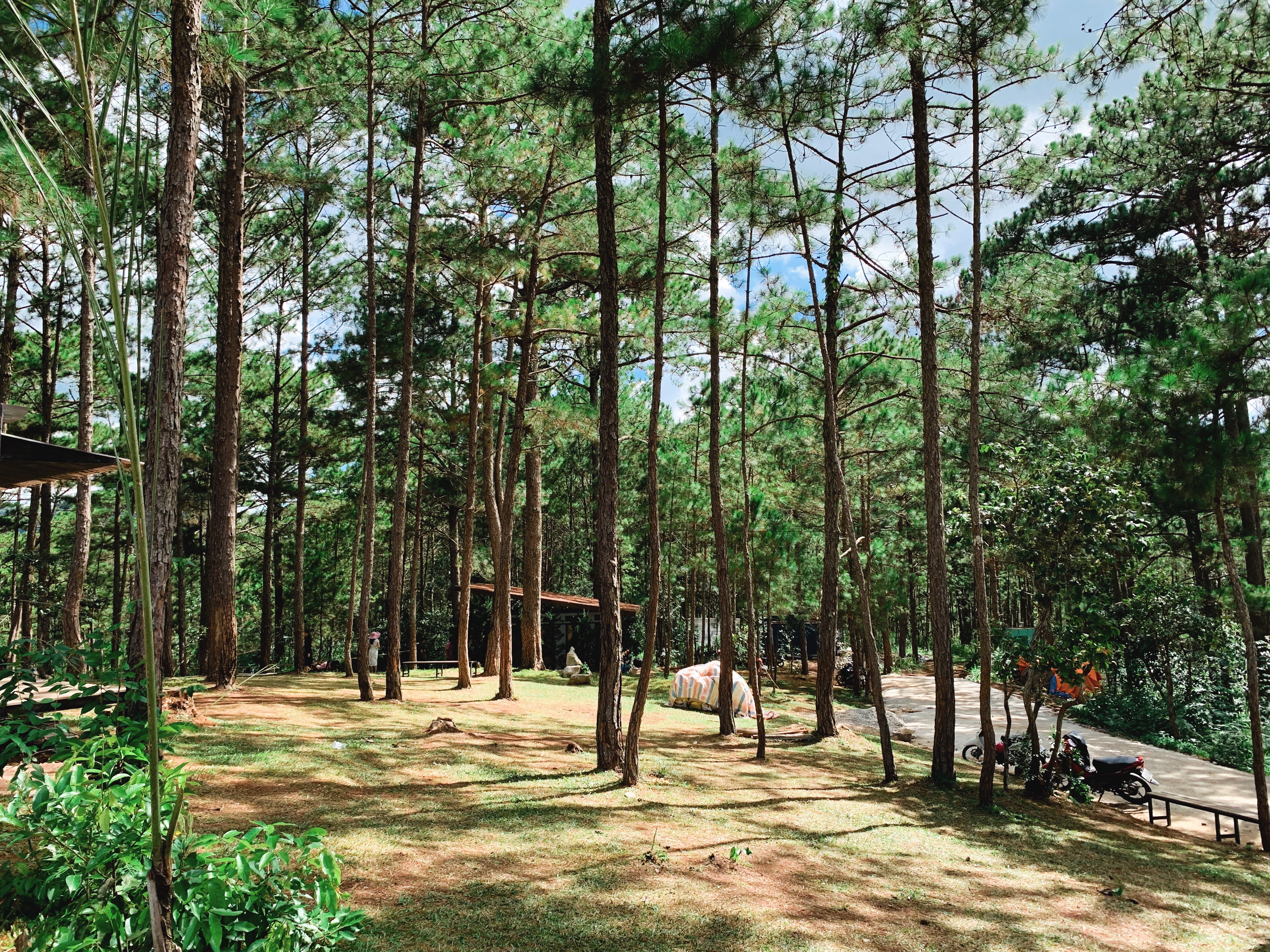
.

.

.

.
Pine trees and bamboo canopies
.

.
Some Chinese tourists took our photo
.

.

.
We found a blog about food in Da Lat and set out to find them all. Food here is different- less soupy!
.

.
Banh cān. Crumpets with egg and sausage that you dip in soup. Once again ate the food before photographing it.
.

.
Bò kho. Beef stew that you dip bread into.
.

.

.

.

.
 .
.

.
The Eiffel tower of Da Lat. has recently been turned into a cell phone tower.
.

.

.
Hoi An is hard to describe but I will try in 3 words: Byron Bay of Asia. It is a colourful, beachy, sunny, laidback, picturesque city with a fishing village vibe where people from all over Asia come for holidays. We arrived in Hoi An and weren’t really prepared for how different it is from the rest of Vietnam.
.

.

.
Hoi An was a major trading port in the 15th century right up until the 18th century, and a meeting place for merchants and travellers from Asia and Europe. It must have been pretty multicultural too, with Dutch, Japanese, and Chinese people settling in Hoi An. The major trade centre of Vietnam eventually moved to Da Nang in the 18th century, basically leaving Hoi An in this kind of arrested development for the next 200 years. it basically missed the industrial/technological revolution that happened over the rest of Vietnam until it was registered as a UNESCO world heritage site in 1999. I cannot stress enough how well preserved this city is – original architecture, streets and pavers, canals and ancient trees. There is a lot of new development happening outside of the Old Town /Ancient Town (they use both interchangeably), but walking through the original city you can really imagine living in an ancient world.
.

.

.

.
.

These chooks hang out here everyday and just cuckoo around until bedtime.
.

.

.

.
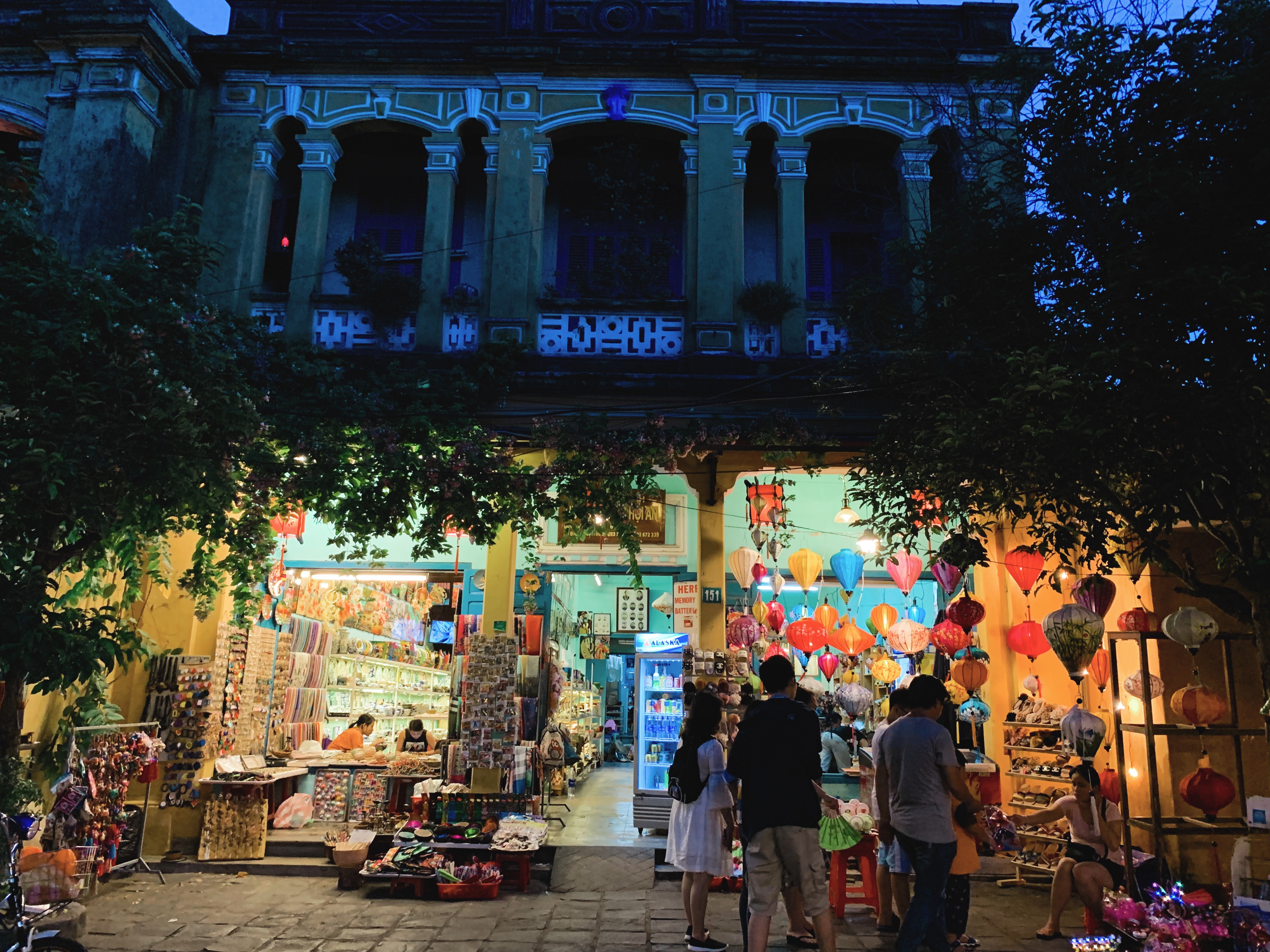
.

.
Of course there’s a Paddy’s Irish Pub here.
.
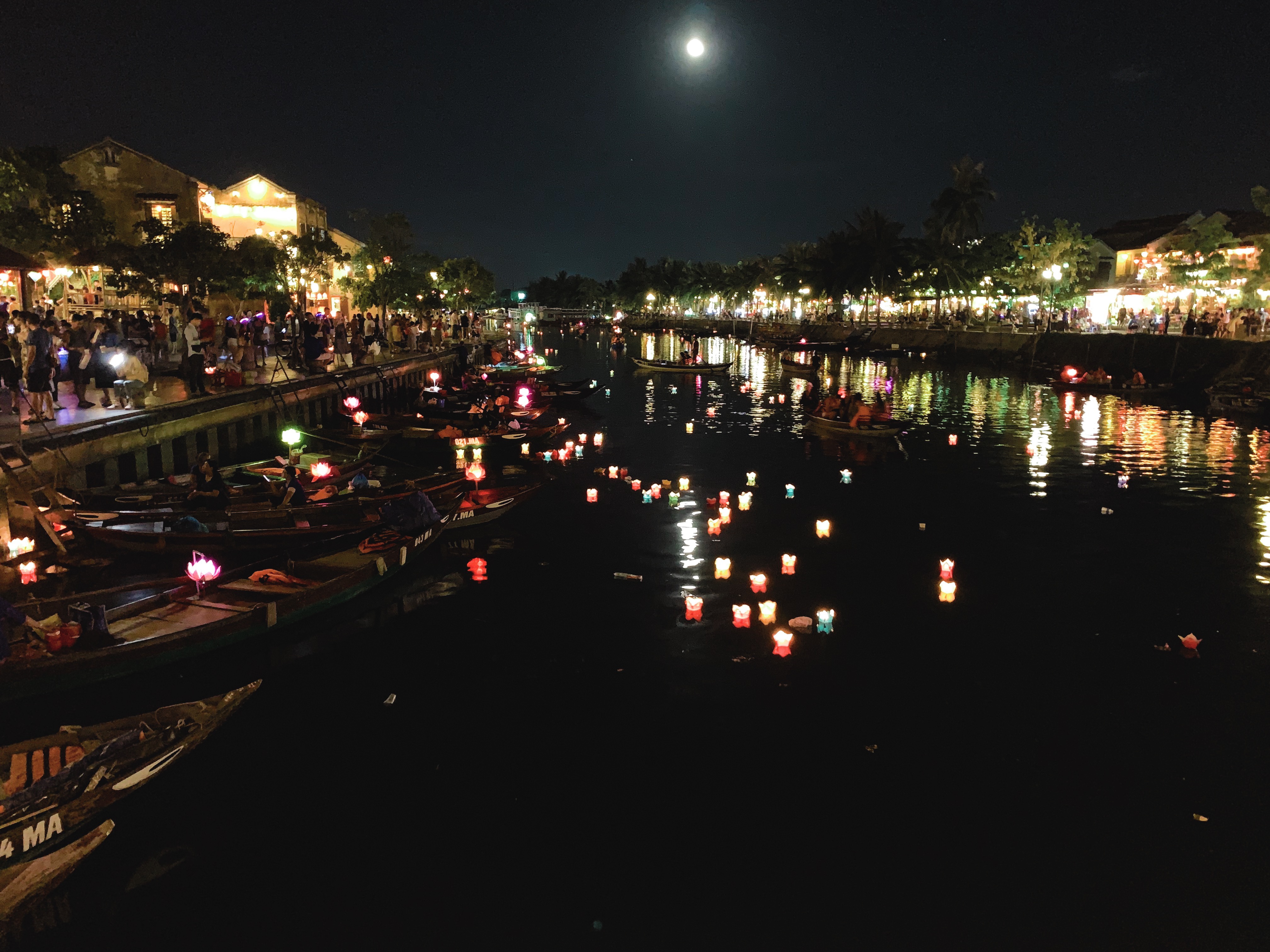
.
View of the river from the bridge to Old Town.
.
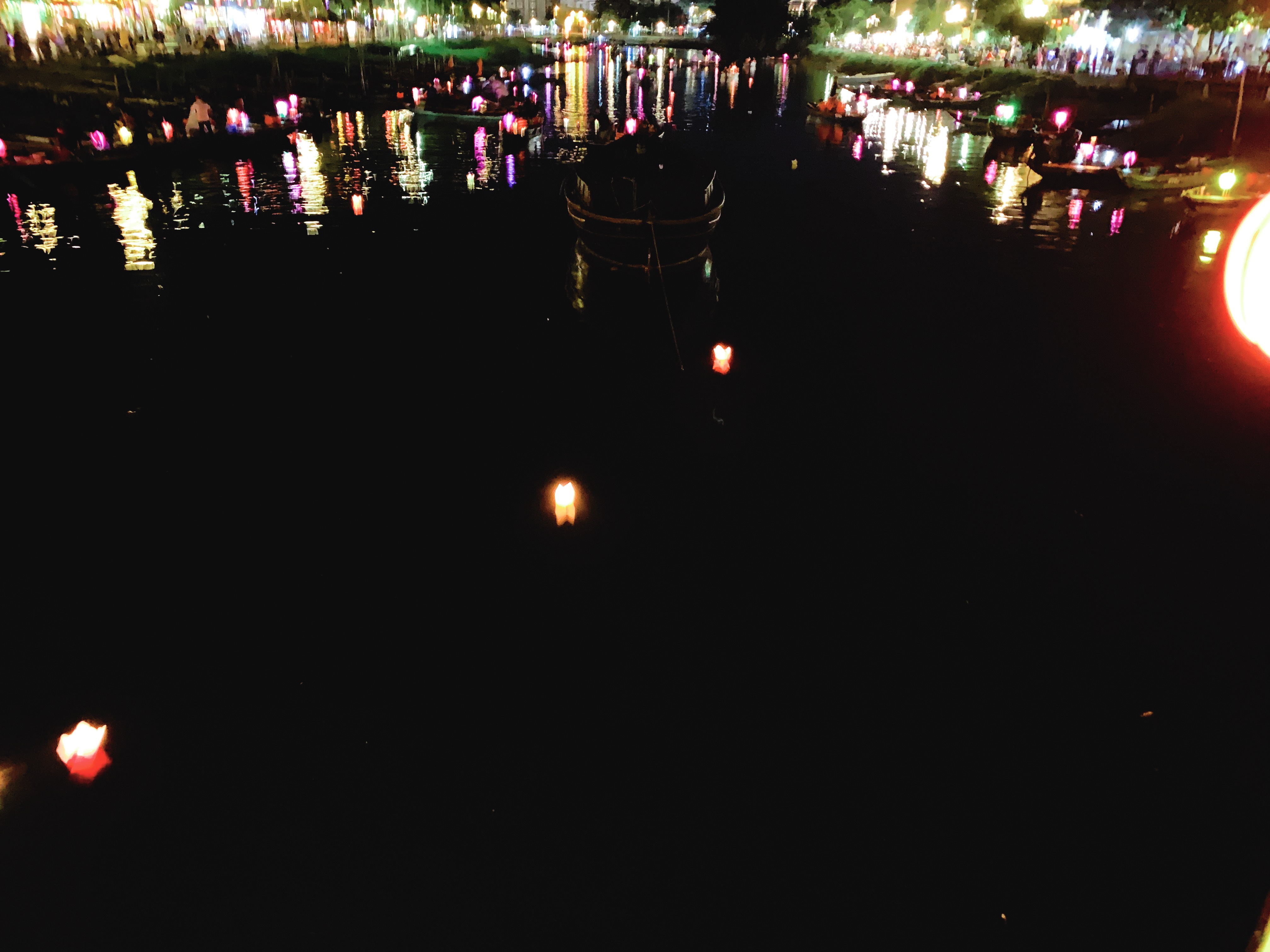
.

.
Hoi An by night is utterly enchanting but also bizarre. It might be because of the 40c heat but the streets were basically empty during the day and swamped at night. It has a nice vibe though, lots of families on holidays, especially with young children.
.

.

.

.

.
Our first night was kind of daydreamy, wandering around the markets and streets checking everything out. The yellow walls all over the ancient town are beautifully decorated with glowing lanterns and overgrown jasmine that perfumes the air, and the sound of the water lapping at the canals is really pretty, especially at night.
.

.

.

.
As pretty as Hoi An is, it did lose its shine on day 3ish. In most of Vietnam we felt like people were happy to just chat wanting nothing in return, but Hoi An is tourist turned up to a thousand. As they say, the worst thing about being a tourist is other tourists etc.
.

.
So back to bridges of Vietnam. There is a bridge here called the Japanese Covered Bridge. We made a friend named Hoa who grew up in Hoi An and she retold a story she heard as a little girl about the origins of the bridge. The story says that the earthquakes felt over Asia back in the day were caused by a giant dragon, with its body over Asia and its head in Hoi An. The Japanese people followed it down to the village and created a covered bridge for it to be contained in to stop the earthquakes.
.
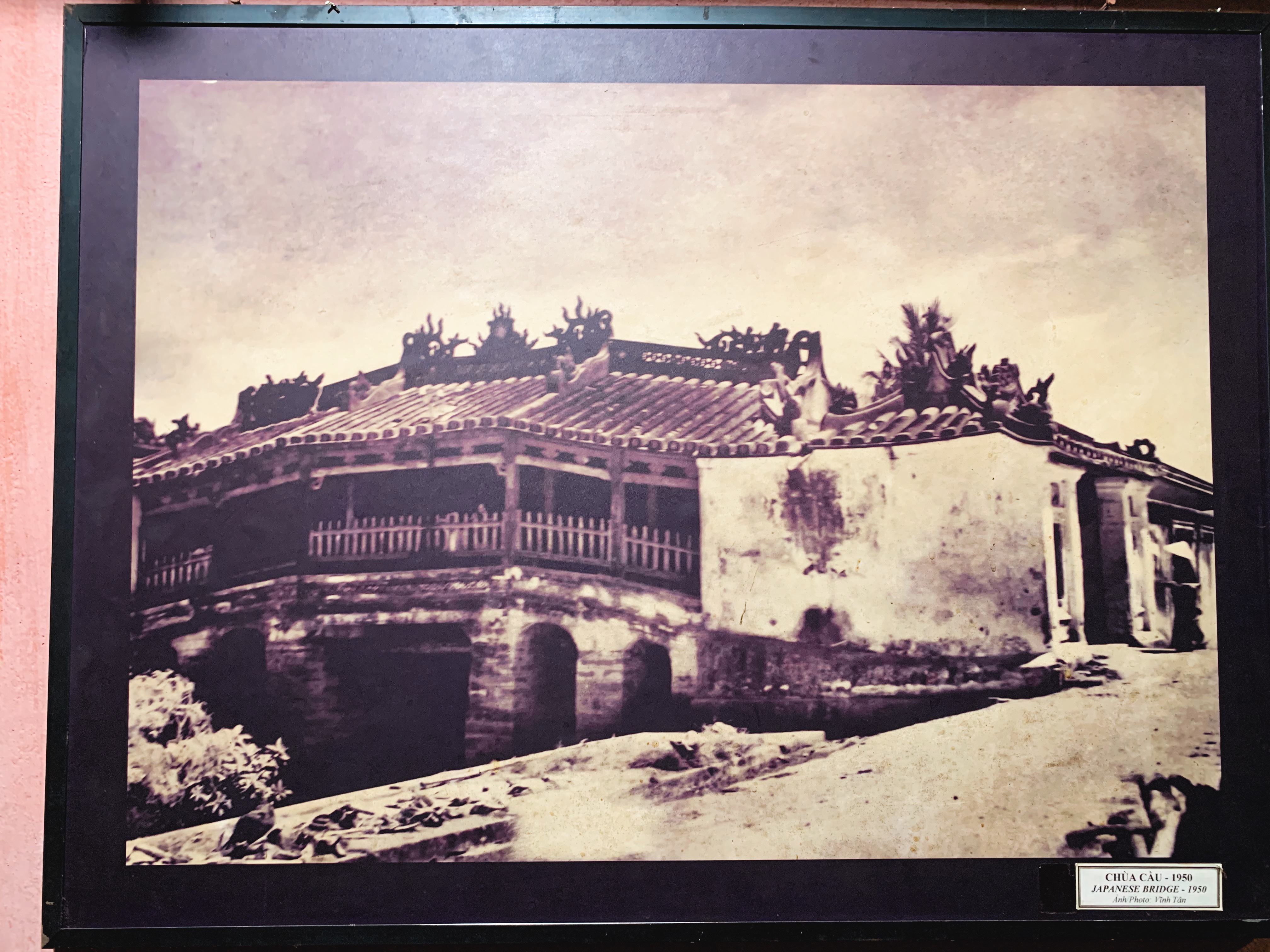
.

.
Halfway over the bridge there is a small museum with pictures of its use during the French colony.
.
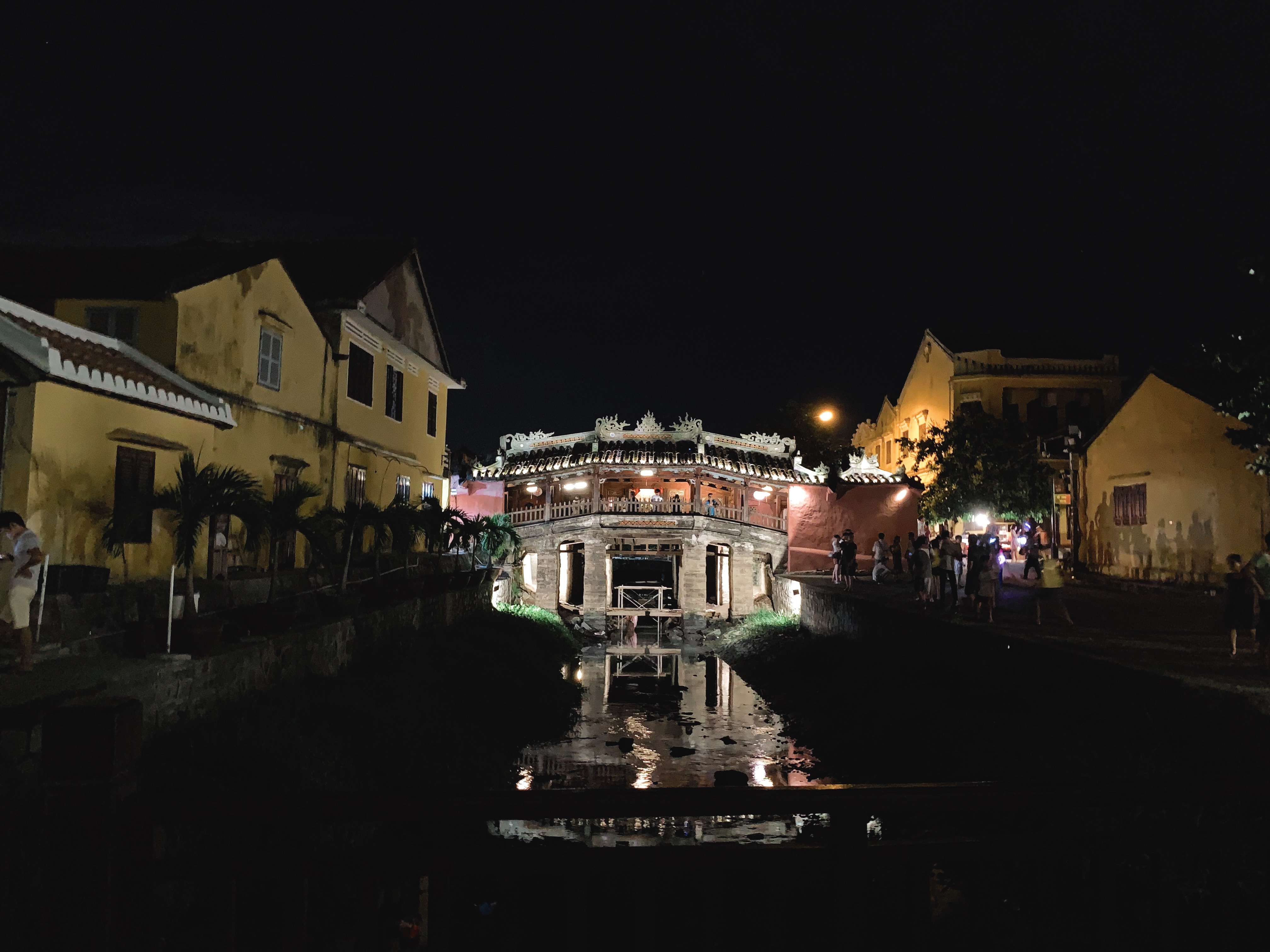
.
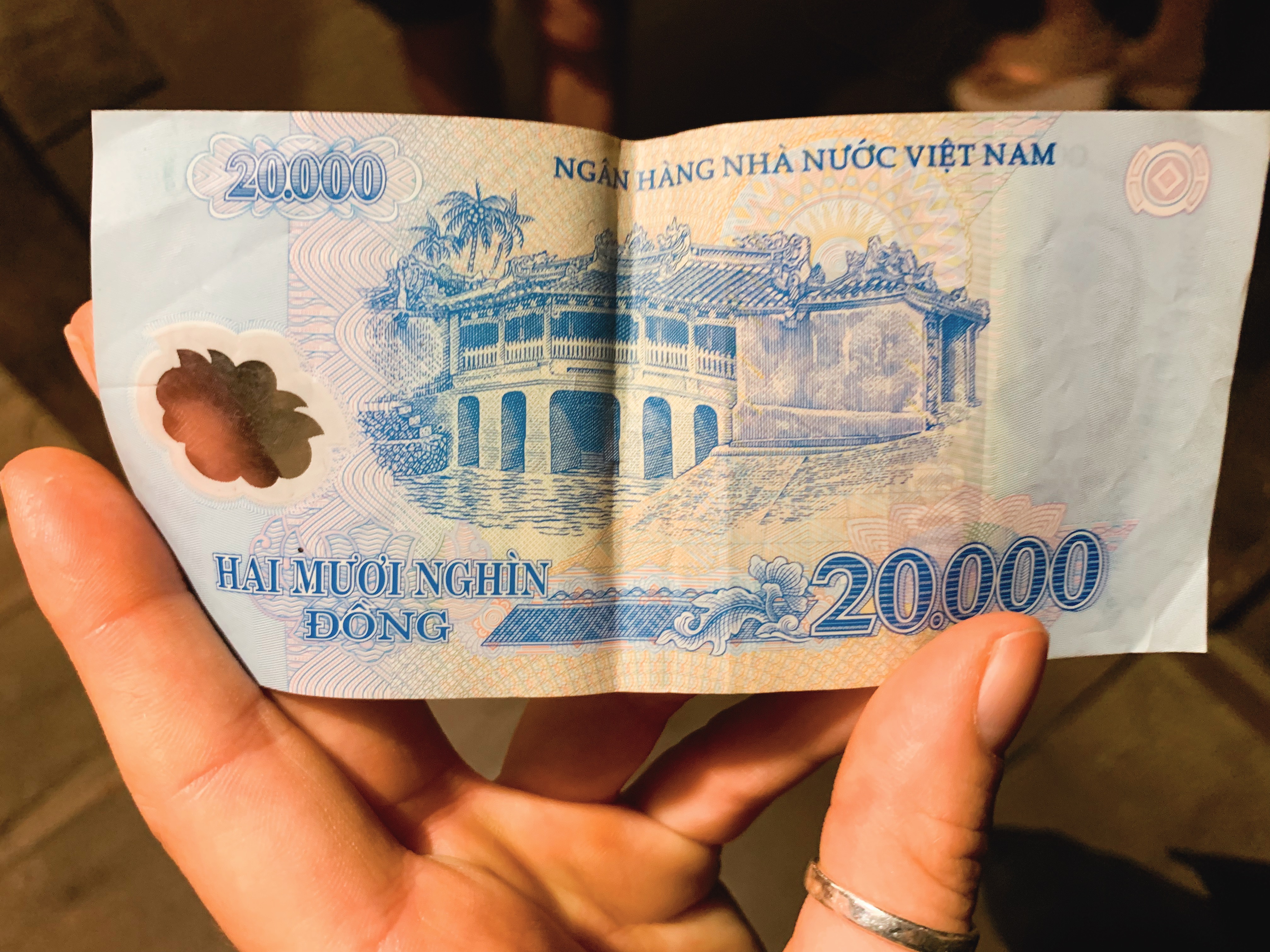
.
It’s even printed on the money here.
.

.
We had some incredible food in Hoi An. This place called Co Cafe on the river got all of our business because it was so good. White rose dumplings. We also had Cau Lau (pork, noodles, greens), Mi Quang (noodles, egg, pork, prawn and other great things), Vietnamese rice pancake, steamed fish in banana leaf, and a great jelly-like dessert thing.
.

.
The food here was so great, we asked the family if they would consider teaching us how to make Mi Quang and Cau Lau. This is how we met Hoa. She is incredibly sweet and hospitable and was happy to host a cooking class for us in her kitchen. We met her in the morning to go to the market, and spent the morning in her kitchen learning how to make Vietnamese food. Yum
.

.
Taking the boat across the canal to the market.

.

.

.

.

.

.

.

.
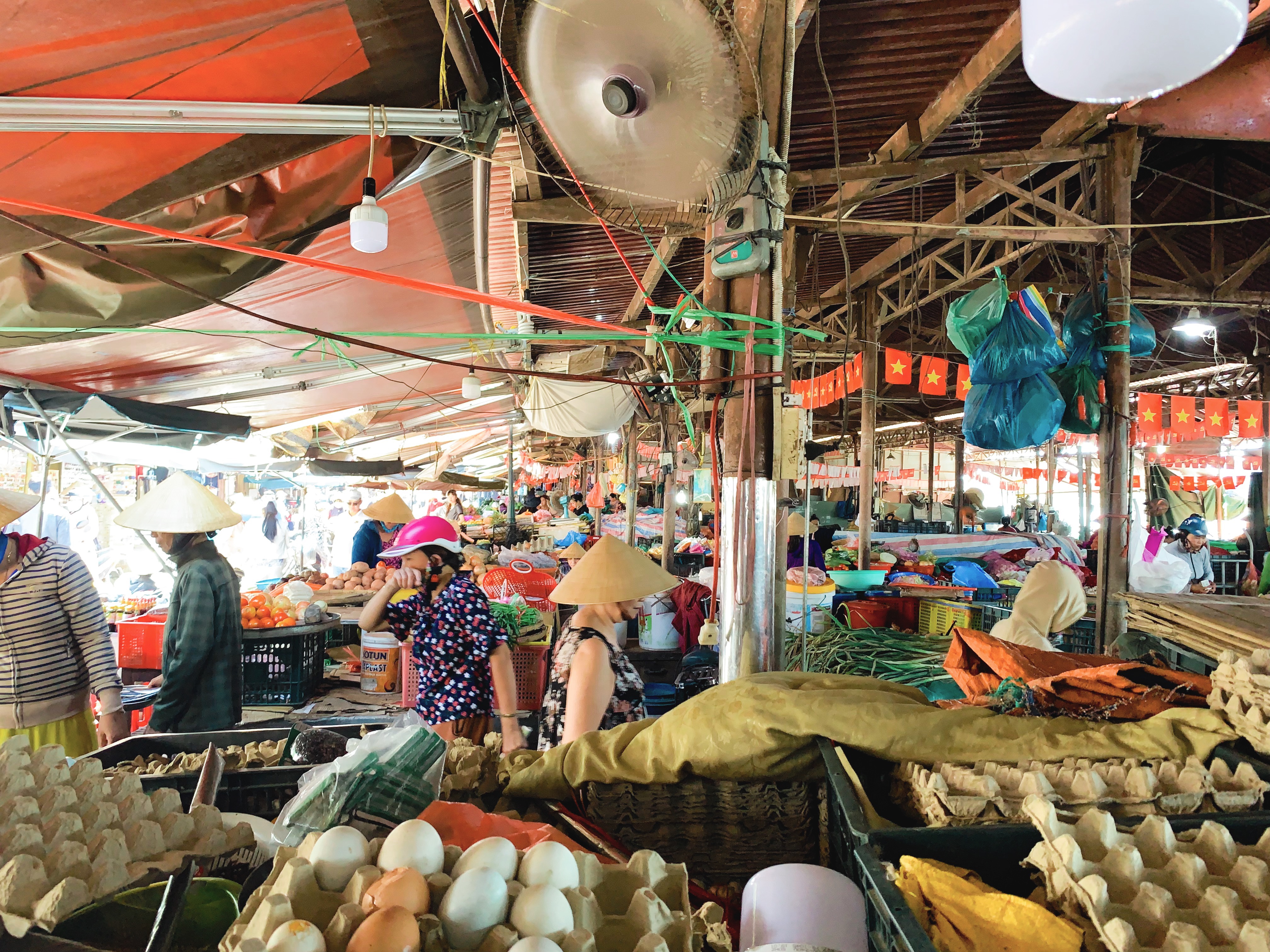
.
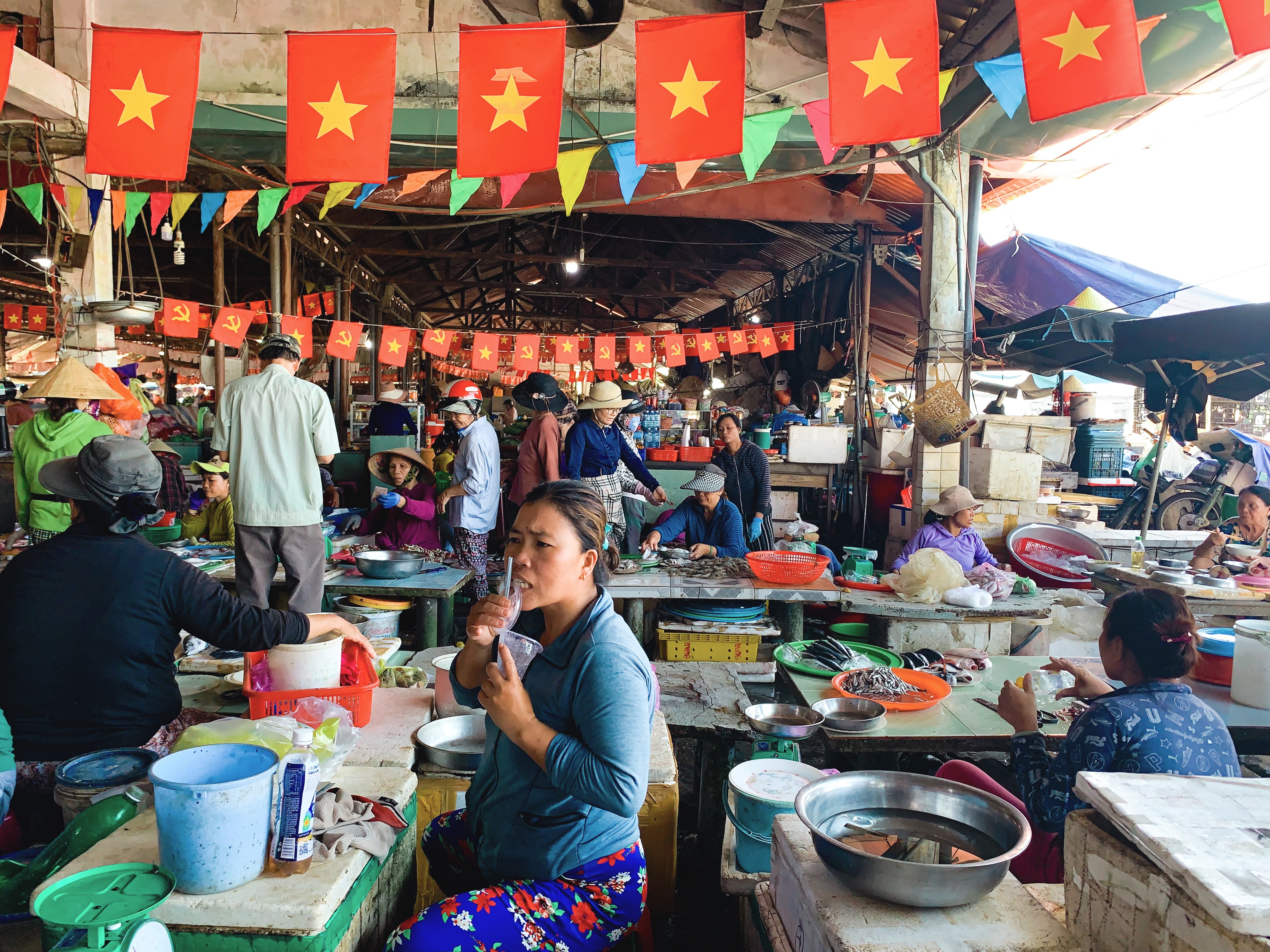
.

.

.

.
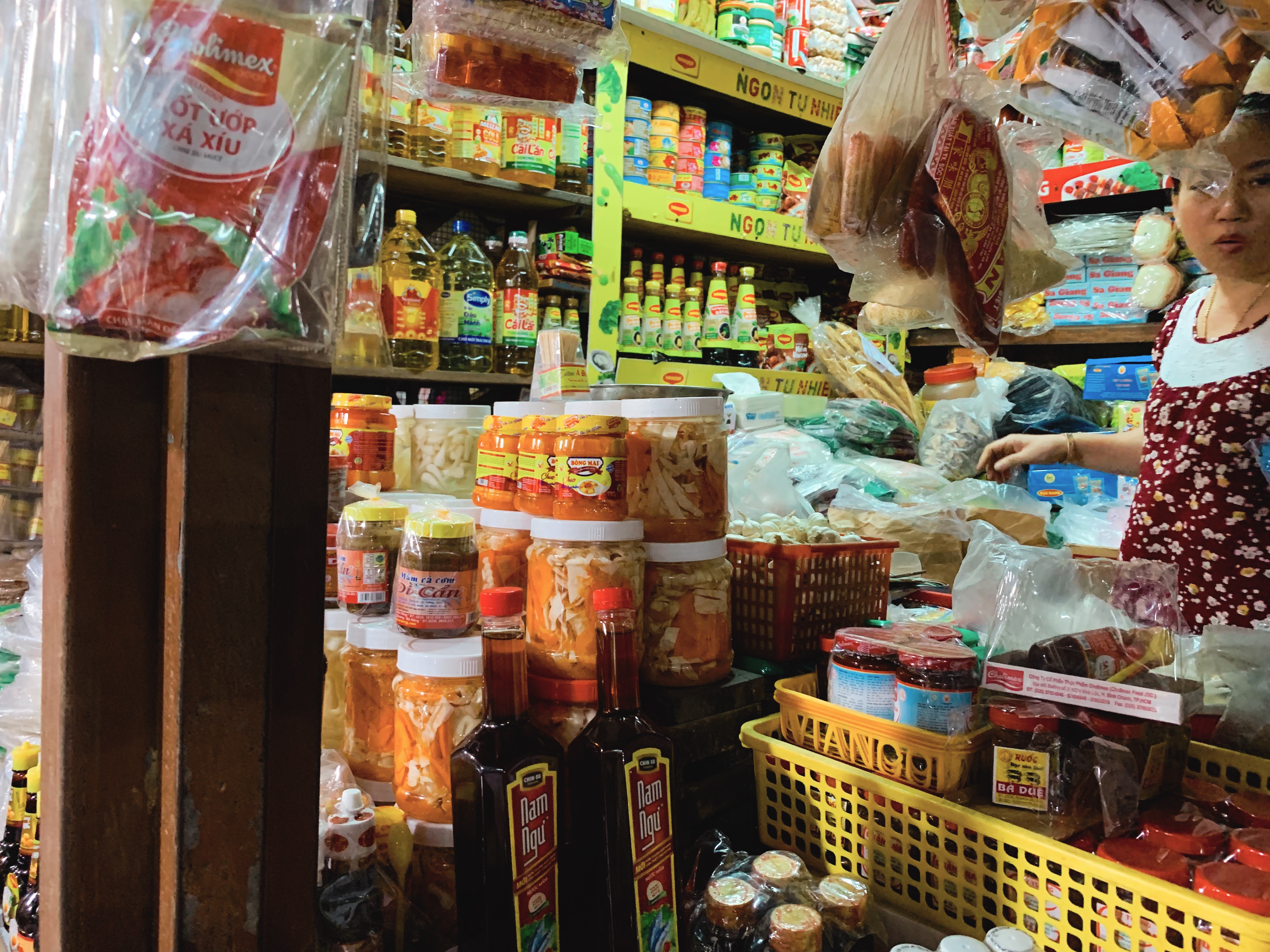
.

.

.

.
.

.

.
Tollbooth between Huê and Da Nang
.

.

.
We drove through the Hải Vân Pass where the US army had a base in the centre of Vietnam. The surrounding areas are really beautiful – we drove through the tunnel that goes through a mountain to discover that it was storming on the other side. Luckily our first rain in Vietnam so far.
.

.

.

.

.

.
There are both American and French bases here, and you can tell from the difference in architecture.
.

.
Some interesting yellow moss growing on the inside.
.

.
Marble mountain covered by fog
.
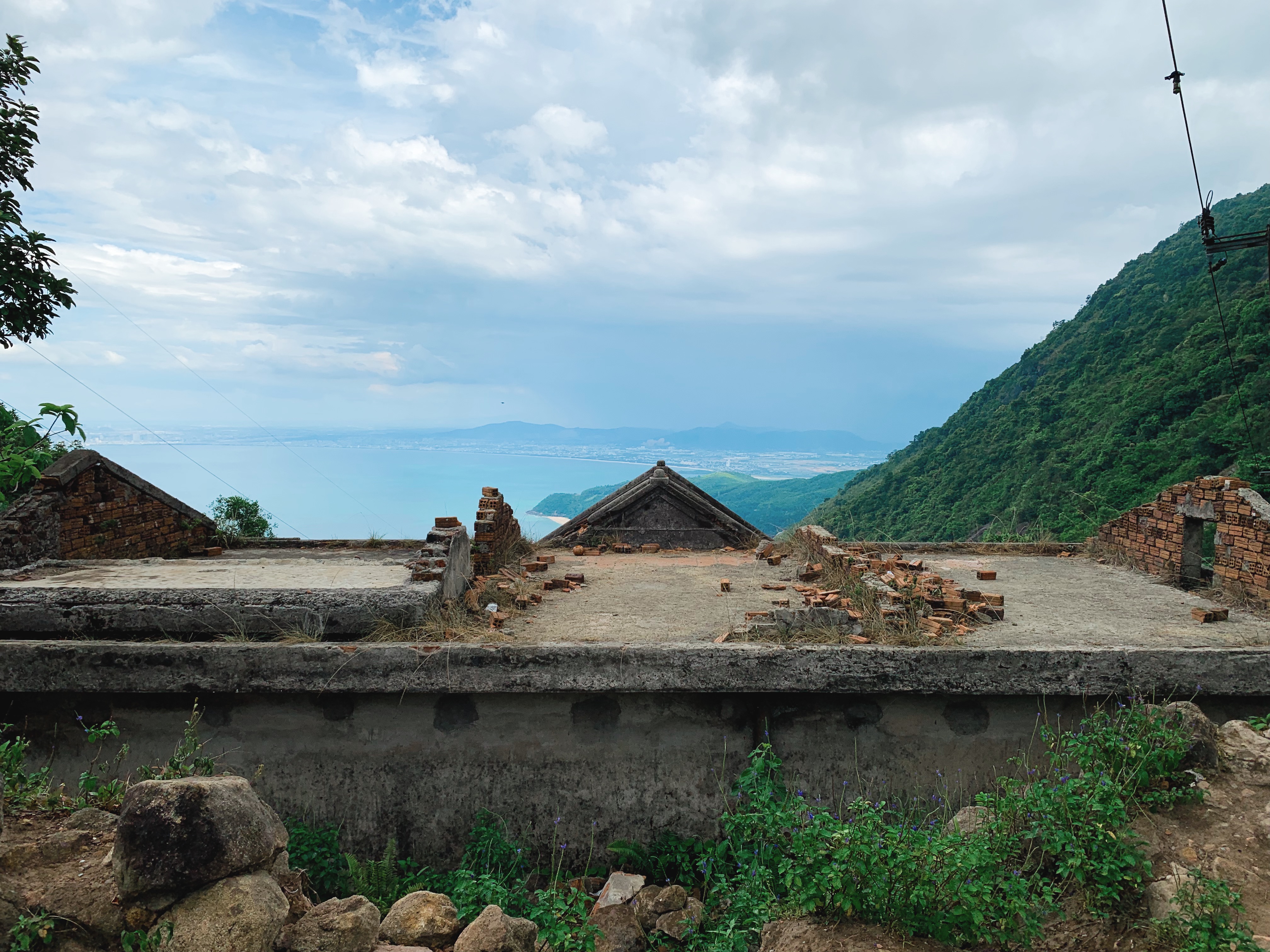
.
You can tell why this was chosen as a base, you have a pretty good view of all the surrounding areas and beach in the valley below.
.

.

.

.
After visiting the base we stopped in at the Linh Ung Pagoda. It’s on top of this marble mound so you can walk or catch a lift.
.

.

.
View from the top
.

.
The top is a really vast Buddhist site, with Pagodas, caves, gardens, waterfalls and little museums.
.
.

.

.
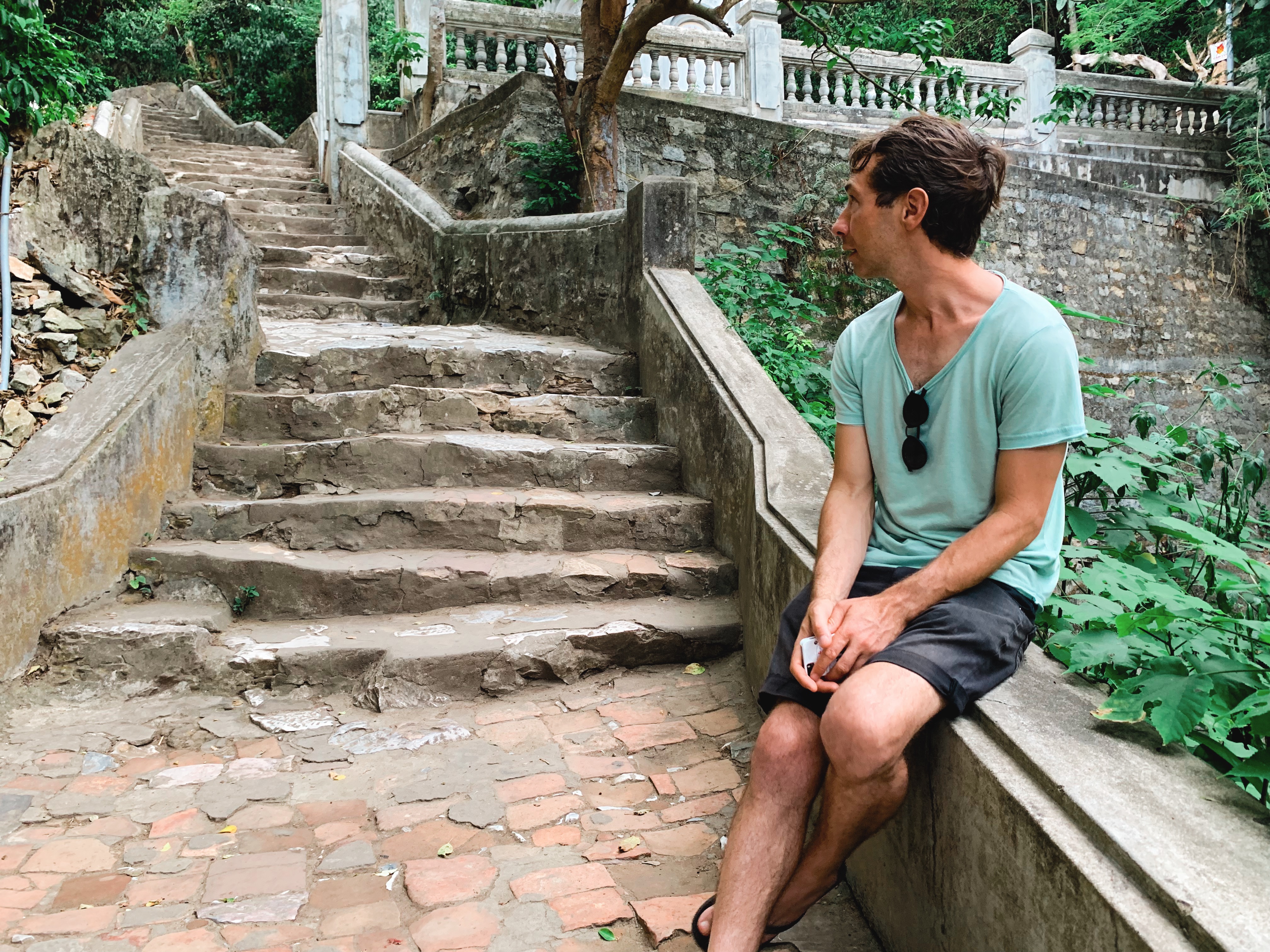
.

.
Travis went in this big cave. I chilled out and had an orange juice instead because from the look of people coming out of it it must have been 59 degrees and 90% humidity in there.
.

.
Check out my super cool raincoat
.
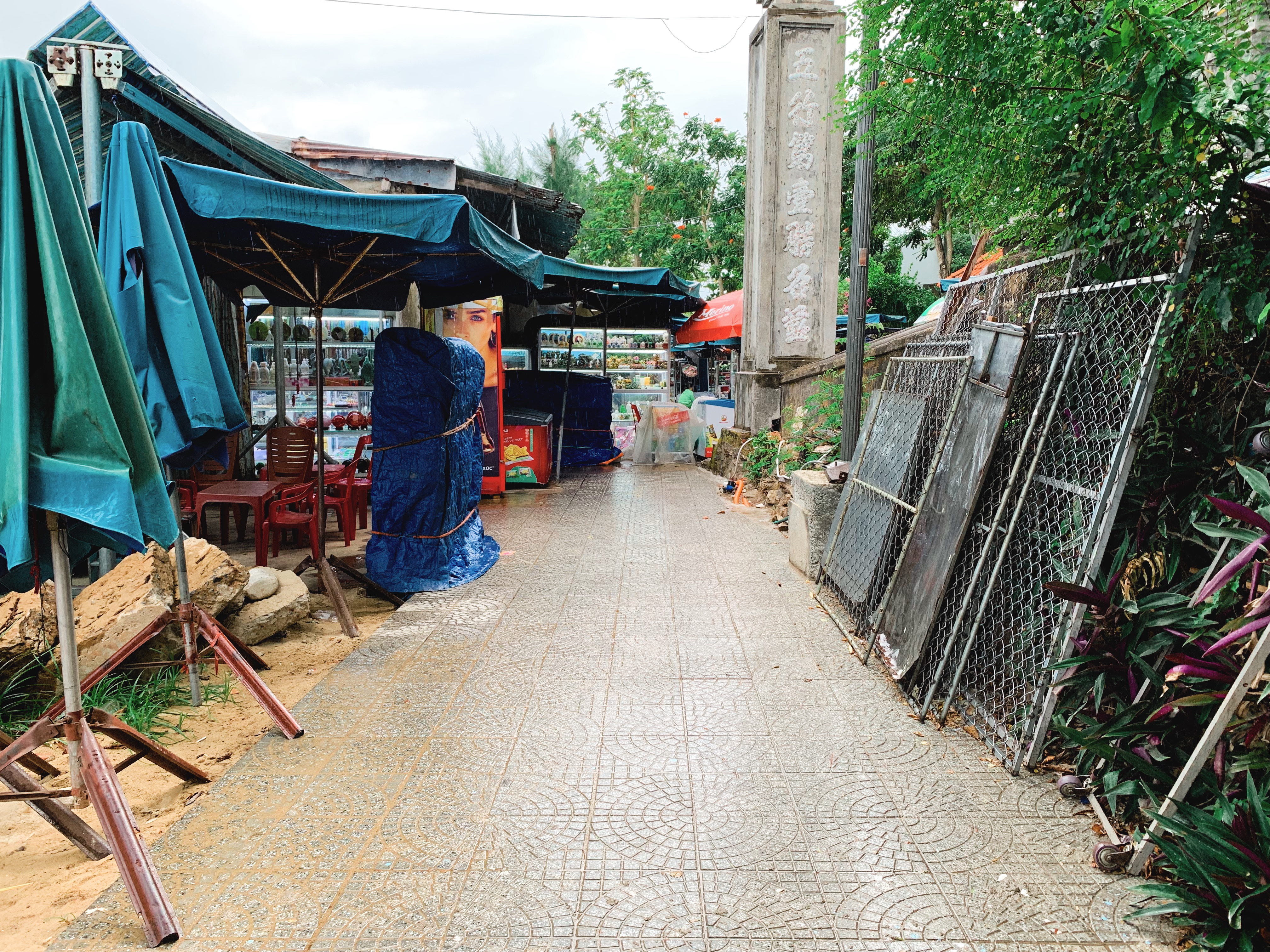
.
We spent a day in Da Nang city but I don’t have a great pictures, unfortunately. It was about 40c and I was really tired and overwhelmed! The city itself is quite pretty and a bit more monied than other places we have been. Lots of bright lights and hotels. There are a lot of Korean tourists here on holidays for the international fireworks festival. We stopped at a bar/bistro that was as expensive as at-home prices as an example of how Da Nang turns it up. We originally were booked in to see China vs England compete but after our stay in Hoi An decided to head further south instead. We were pretty happy to escape Da Nang and watch it on Tv instead!
.

.

.
Dragon Bridge
.
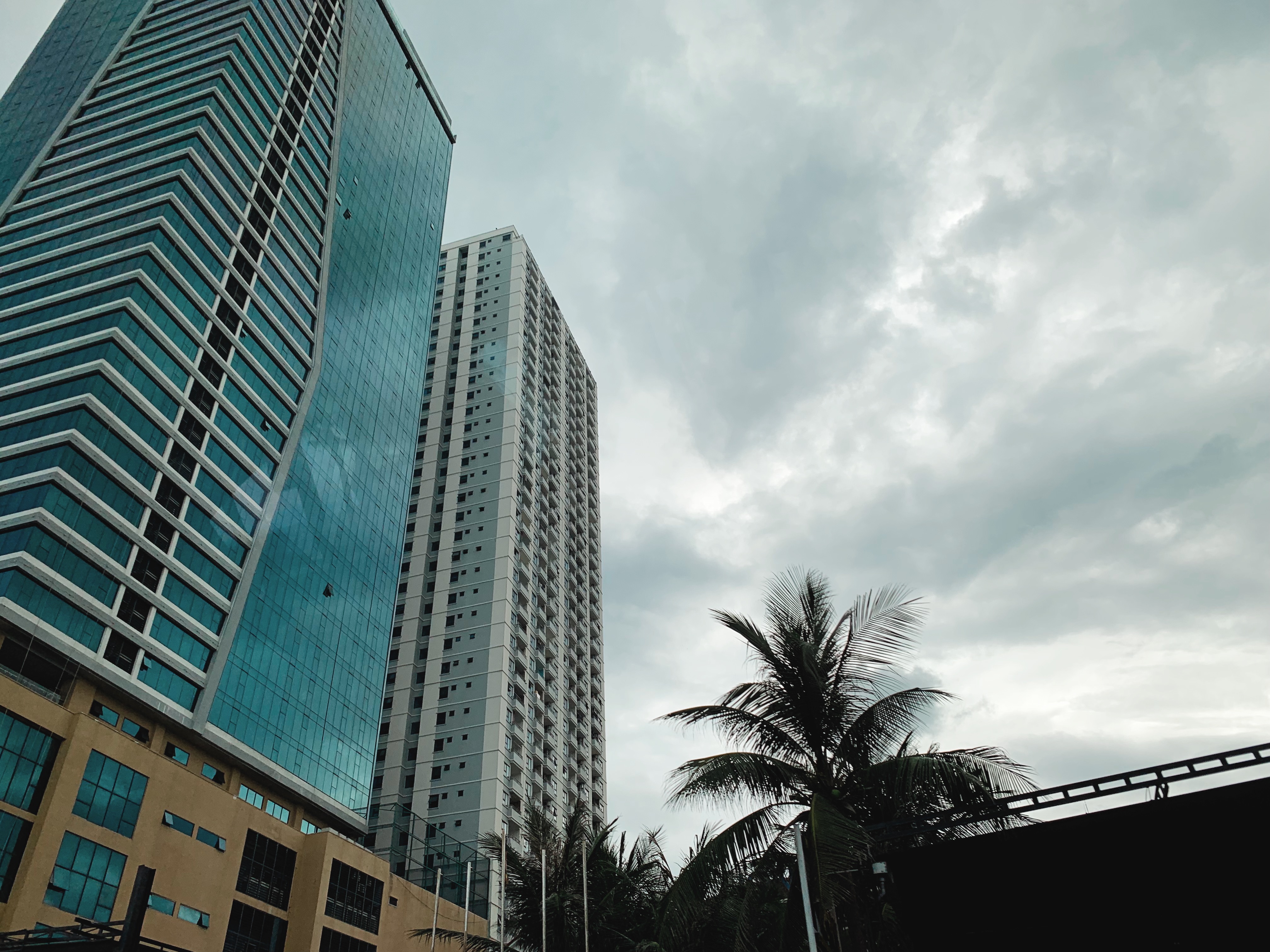
.
Again, I neglected to take many pictures in Da Nang so here is an example of the incredible bridges here. They are really something special. My favourite one is the suspension bridge that looks like a work of Gabriel Dawe art.
.
We stopped for a drink before our overnight train. Check out this very strange sunset over the river!!
.

.
“It’s because we’re on the international date line” – Travis
It was a pretty special experience that we happened to see completely by accident. The waitress says it happens every day and she doesn’t know why.
.

.
There are so many beautiful bridges in Vietnam. I can never capture a great photo because I’m always on them, but they’re all really impressive. There’s one in Da Nang with a dragon that shoots fire lights at 9pm, others that have multi coloured suspensions, or beautiful decorations.
.

.
Imperial City (Huê citadel). It’s pretty impressive that there is so much of it left. This place is huge, with a lot of its original buildings intact.

.
 .
.

.

.

.
 .
.

.

.
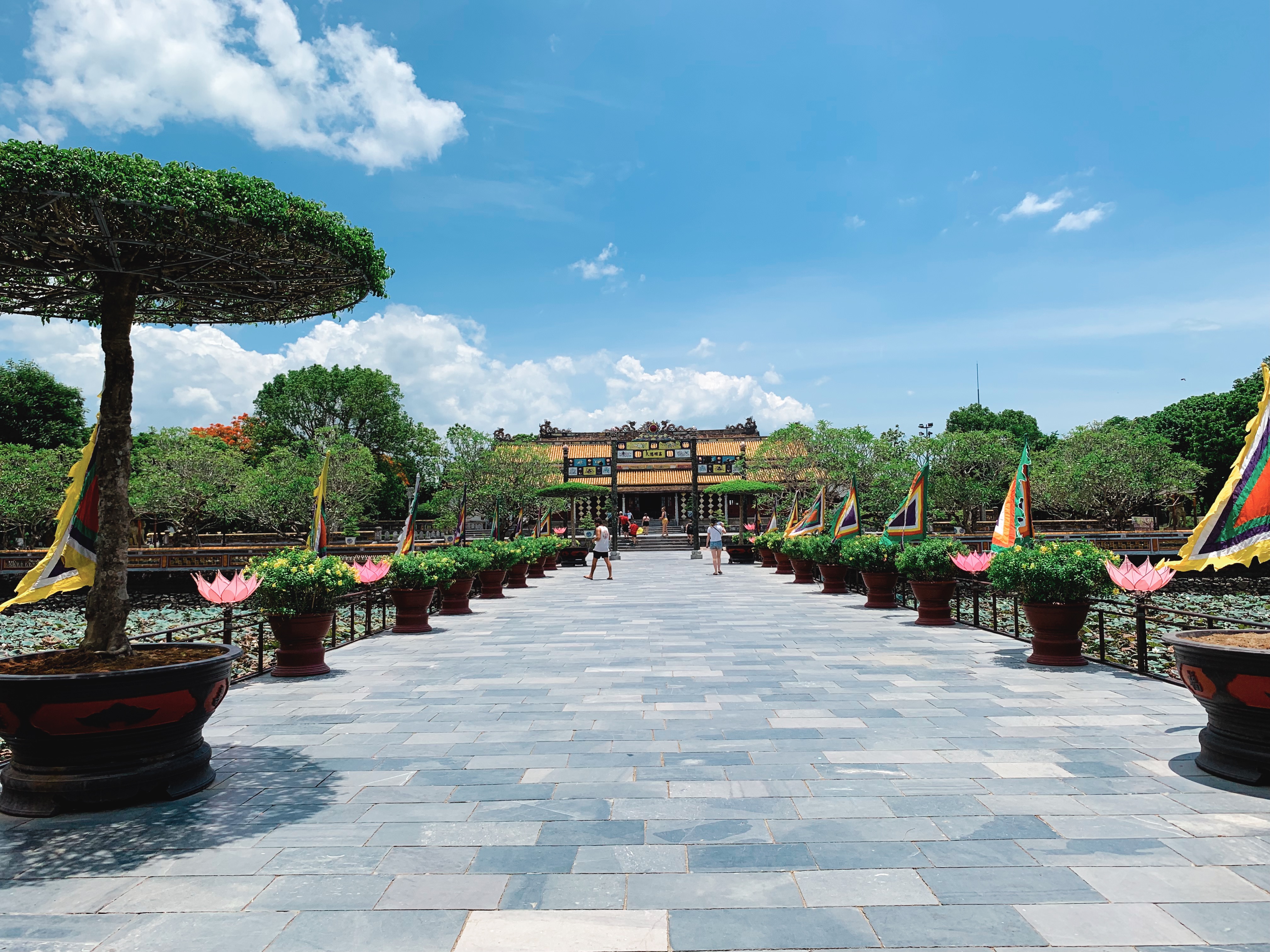
.

.
We had a VR experience here where you can fly around the Citadel and see what it was like 1000 years ago. It was pretty amazing to see soldiers, elephants, workmen and daily life, as well as learn about what each section of the citadel was for.
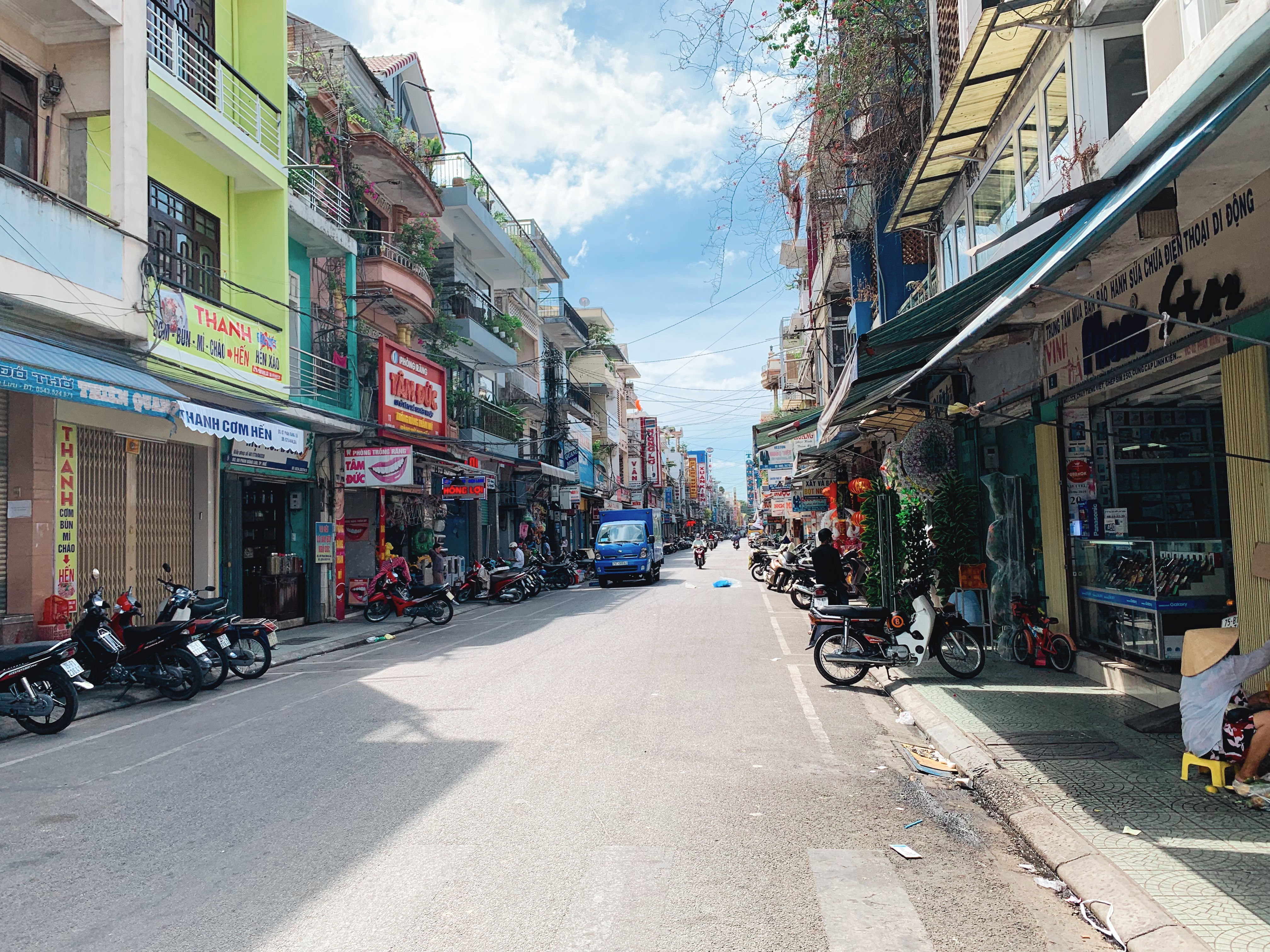
.

.
The perfume river.
.

.
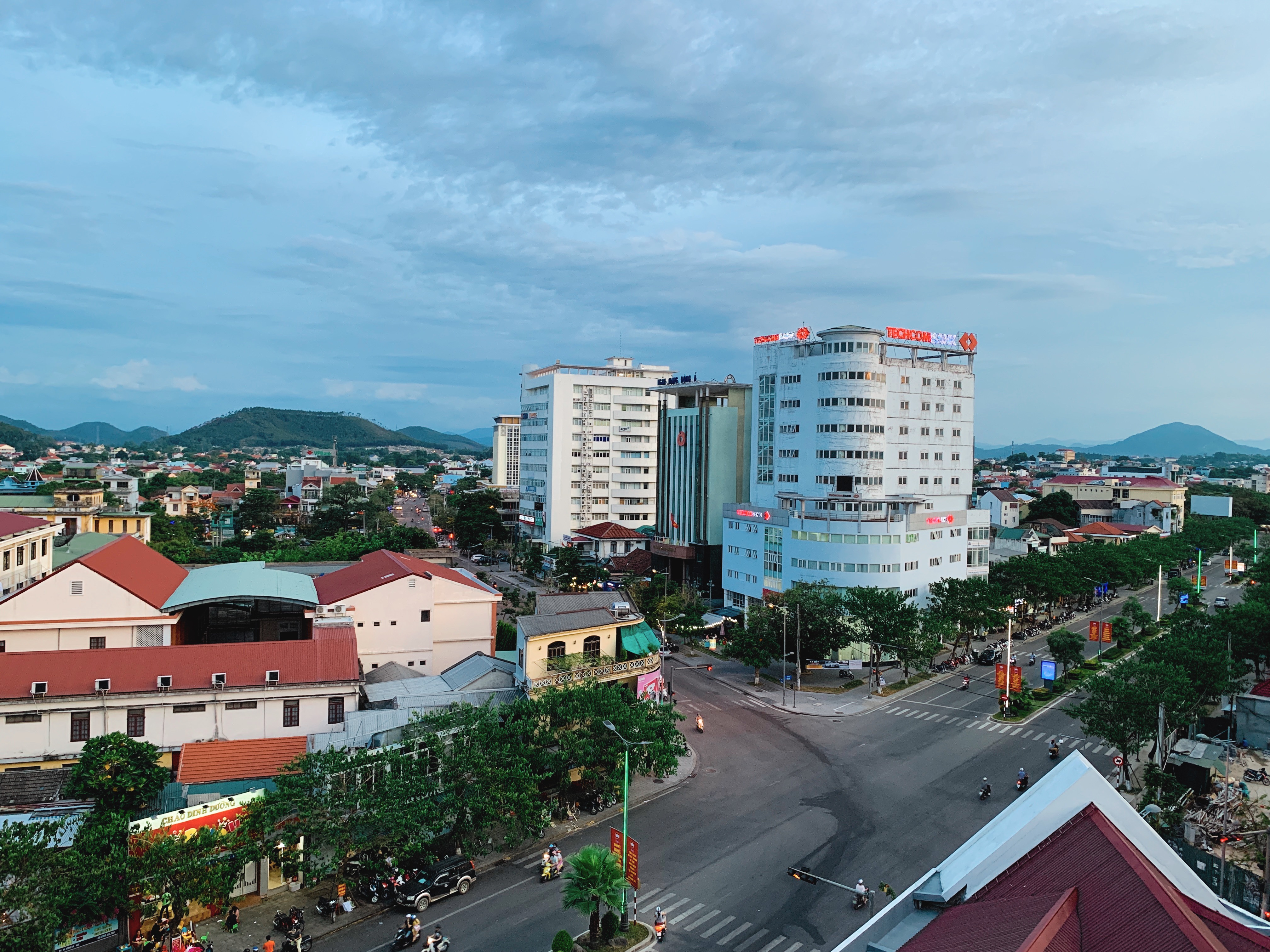
.

.

.
First pool day in Vietnam. We stayed in this schmancy hotel

.

.
Famous Bun Bo Huê in Huê. Beef soup and noodle – delicious.

.
We took the overnight train from Hanoi to Dong Hoi in the Quang Tri Province. I can’t really spell it grammatically because I’m on mobile so forgive me!
The train was pretty cool, we slept in bunk beds in a 4 berth cabin. I didn’t mind the beds and the rolling of the train but it did hit some pretty rocky, bumpy, noisy bits along the way. There were a few moments I thought the old train was going to come off he tracks! But it didn’t! Amazing! It was beautiful to look out the window in the morning and see all the little villages we were passing, as well as the green landscape.
The train conductor was this stern looking Vietnamese man in the offical conductor uniform complete with hat and a set of unwavering serious expressions. Shortly after the train left, someone in the carriage started smoking a cigarette. Travis slept through it but you could hear people going nuts in the corridor trying to figure out who it was. The conductor went to each cabin completely ignoring everyone in it but very diligently sniffing and looking around. I found it amusing.
We shared a cabin with two other men who disappeared in the middle of the night, getting off somewhere along the way. I felt like I didn’t sleep very well but they left without us even noticing so I must have slept better than I think I did.

.
Bao Ninh Beach not far from where we got off the train at Dong Hoi.
.

.

.
We stopped at the Vinh Moc Tunnels in Dong Ha. You need to drive a little to find them, there’s still communities living out here. The houses are kind of richer-looking than the villages, almost like going out to the almost-country in Australia. Big blocks, letter boxes, long driveways.
.

.

.

.
Vinh Moc is right near the beach but there’s not really any sea breeze as you’re a fair way up and surrounded by thickets of bamboo. This is a well that people hid in during the war.

.

.
Trenches used to get around the village if necessary and especially for North Vietnamese fighters

.
There are multiple entries to the tunnels, this is just one.
.

.
Outside there is a display of bombs dropped by the American army at Vinh Moc

.
Going into the tunnel. We had a very nice driver named Thang who came with us. He had a lot of personal connection with the war. It was really giving of him to share with us his family history, I’ll never forget it.
Without sharing too much personal information about our friend, he did tell us that the architect of the tunnels had no formal schooling but designed and coordinated their construction in two years. 1200 (36 families) lived in the tunnels for seven years. It is absolutely incredible to think that this was a reality for so many people. Life happened in those tunnels! Babies were born and went to school in there! Nobody died in that time and the guy who designed them is a national hero. People in Vietnam know who he is and the story of the tunnels. He’s still alive today, around 80 years old.

.

.
Example of a family living in the tunnel. The space for each family was pretty small- like a crawl space.

.

.
Another tunnel entrance from the inside. The tunnel goes down 10 metres in the first level, but the American army started using bombs that burrow to a depth of 10 metres. So the tunnels have three levels, the deepest is 30 metres underground.
.

.

.

.
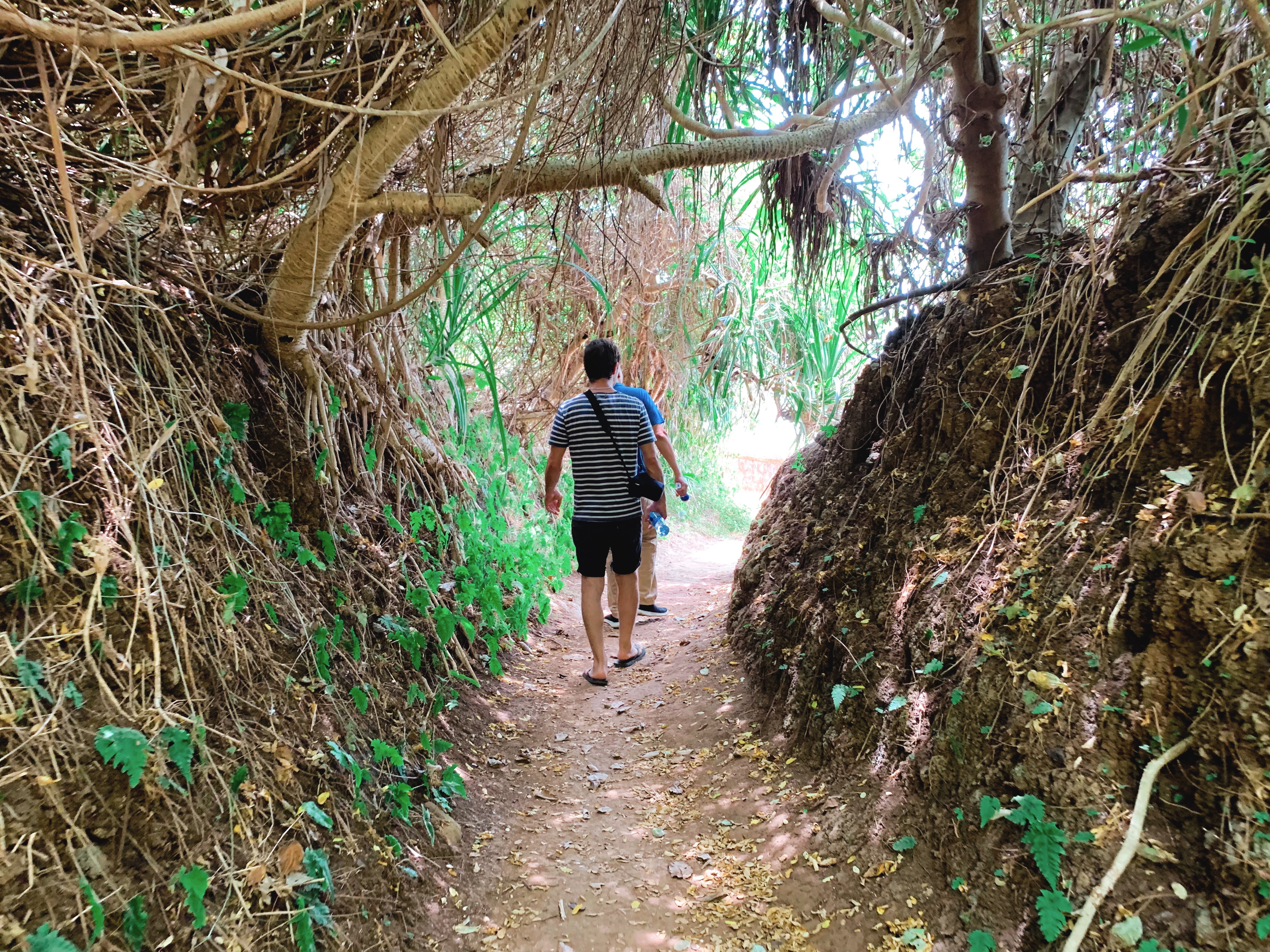
.

.
Beach at the exit of the tunnel.
.

.

.

.
The Vinh Moc has a museum before you go in where you can view war relics and images from the seven years that people lived in the tunnels.
.

.

.
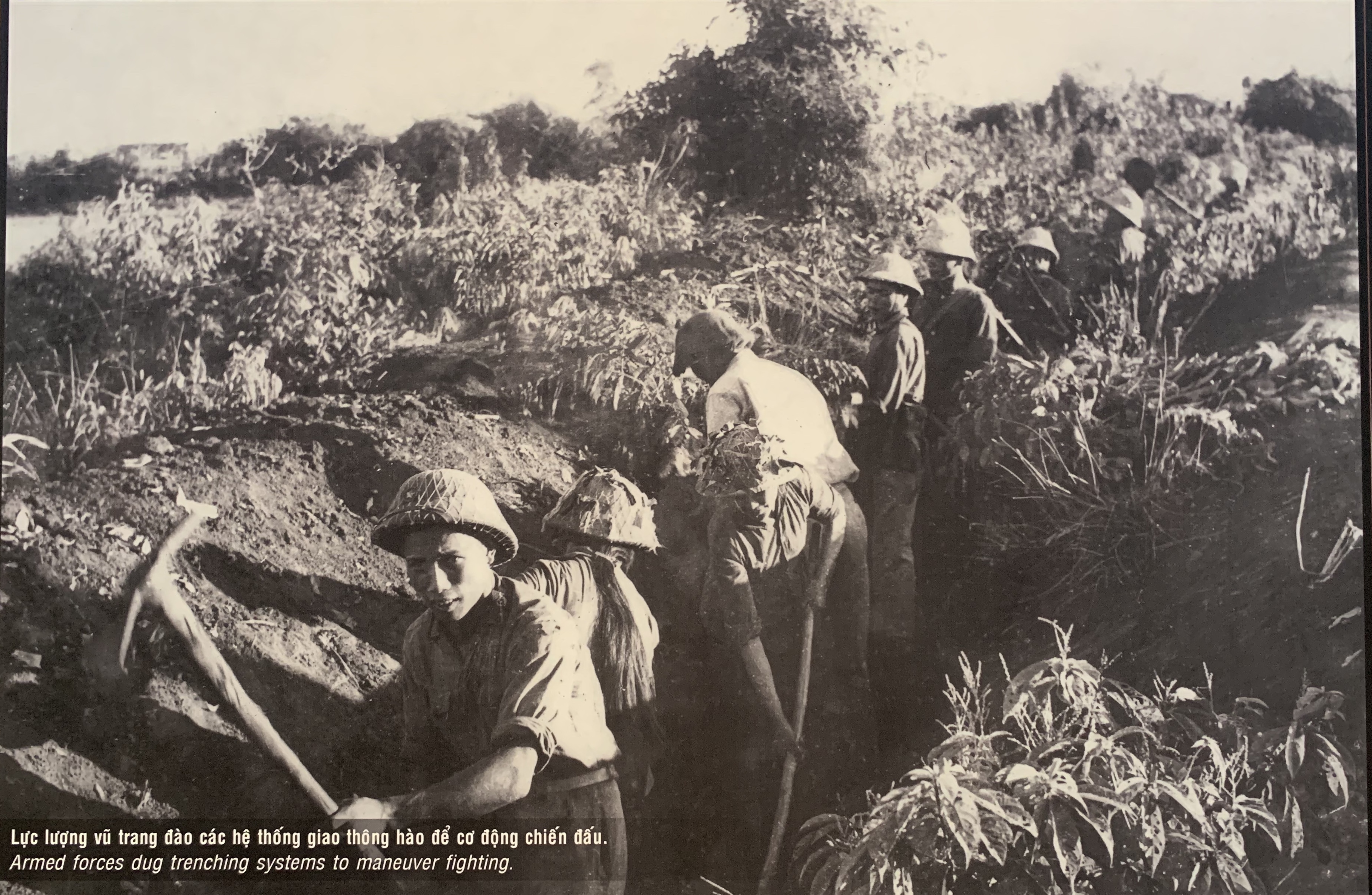
.

.

.
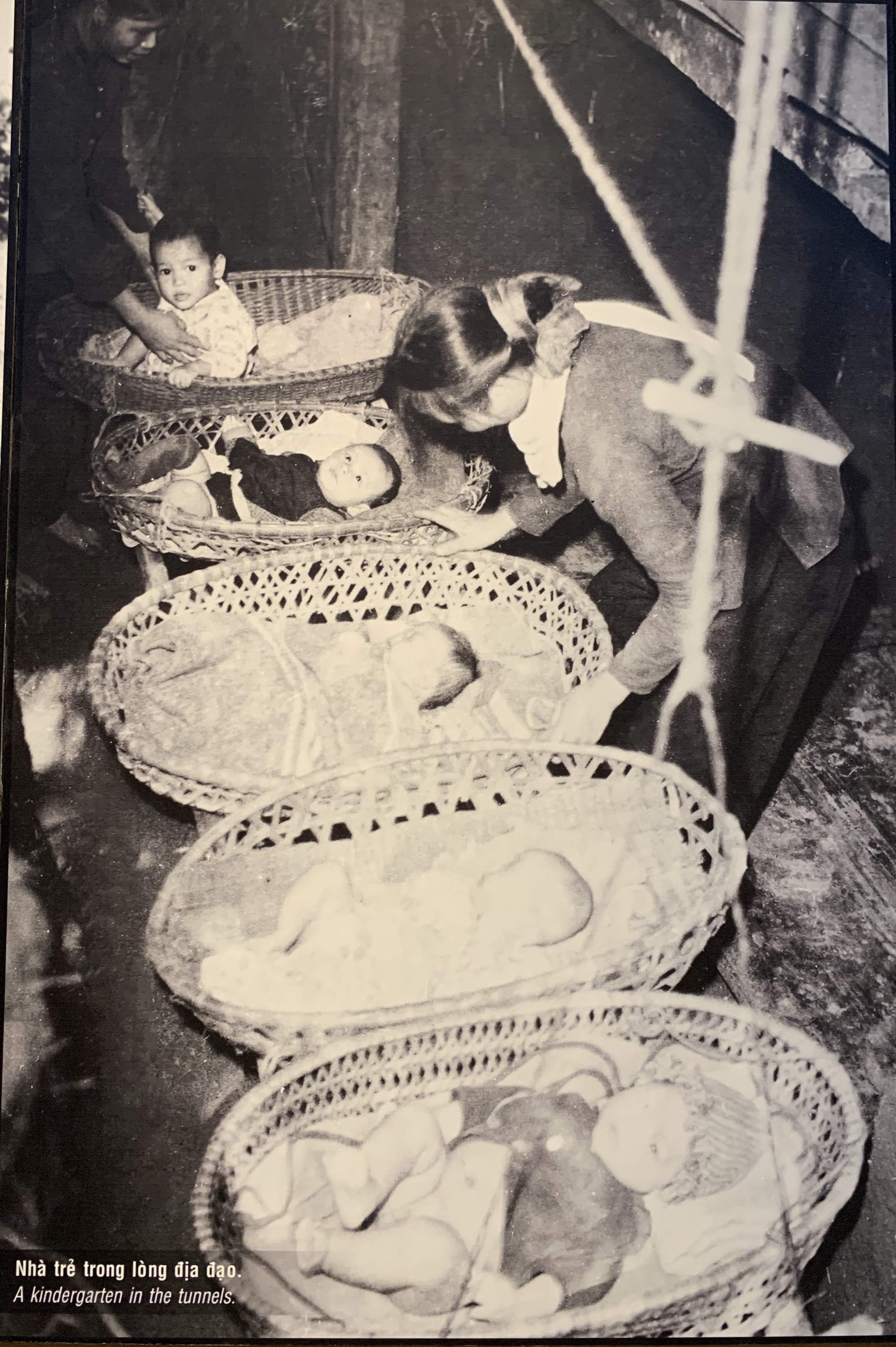
.

.

.

.

.
Our driver friend took us to a place to eat chicken. We had Ga Hap (steamed chicken) as you can see. You eat it with Noodles & soup.
.
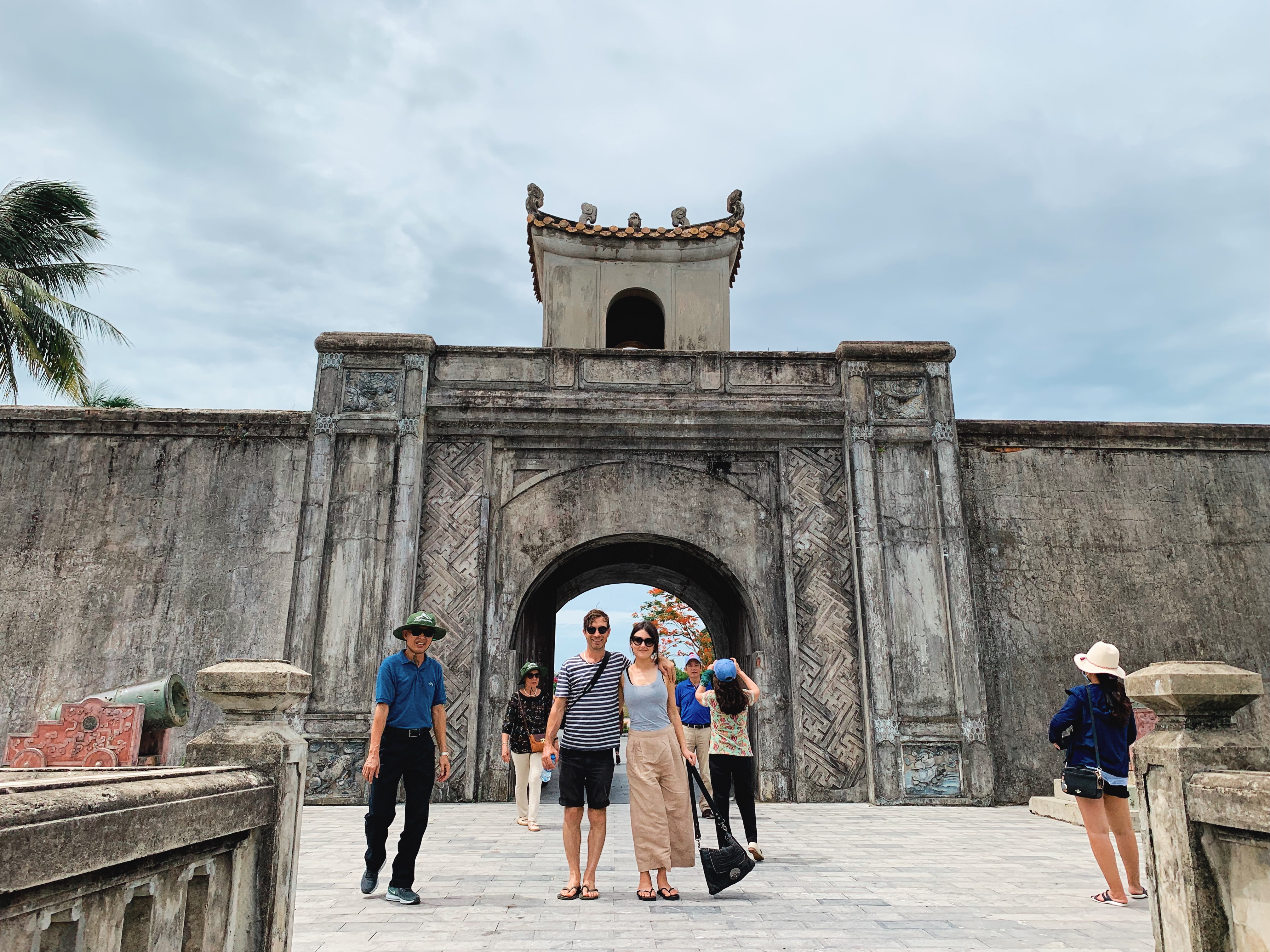
.
Our friend was extremely enthusiastic about taking our picture which is lovely. I dunno if you’re meant to smile or frown in photos at places that have been ravaged by war but here we are at the Quảng Trị Ancient Citadel. It was pretty much completely destroyed by air raids except for this wall. The inside is now a museum showing the devastation.
.

.

.

.
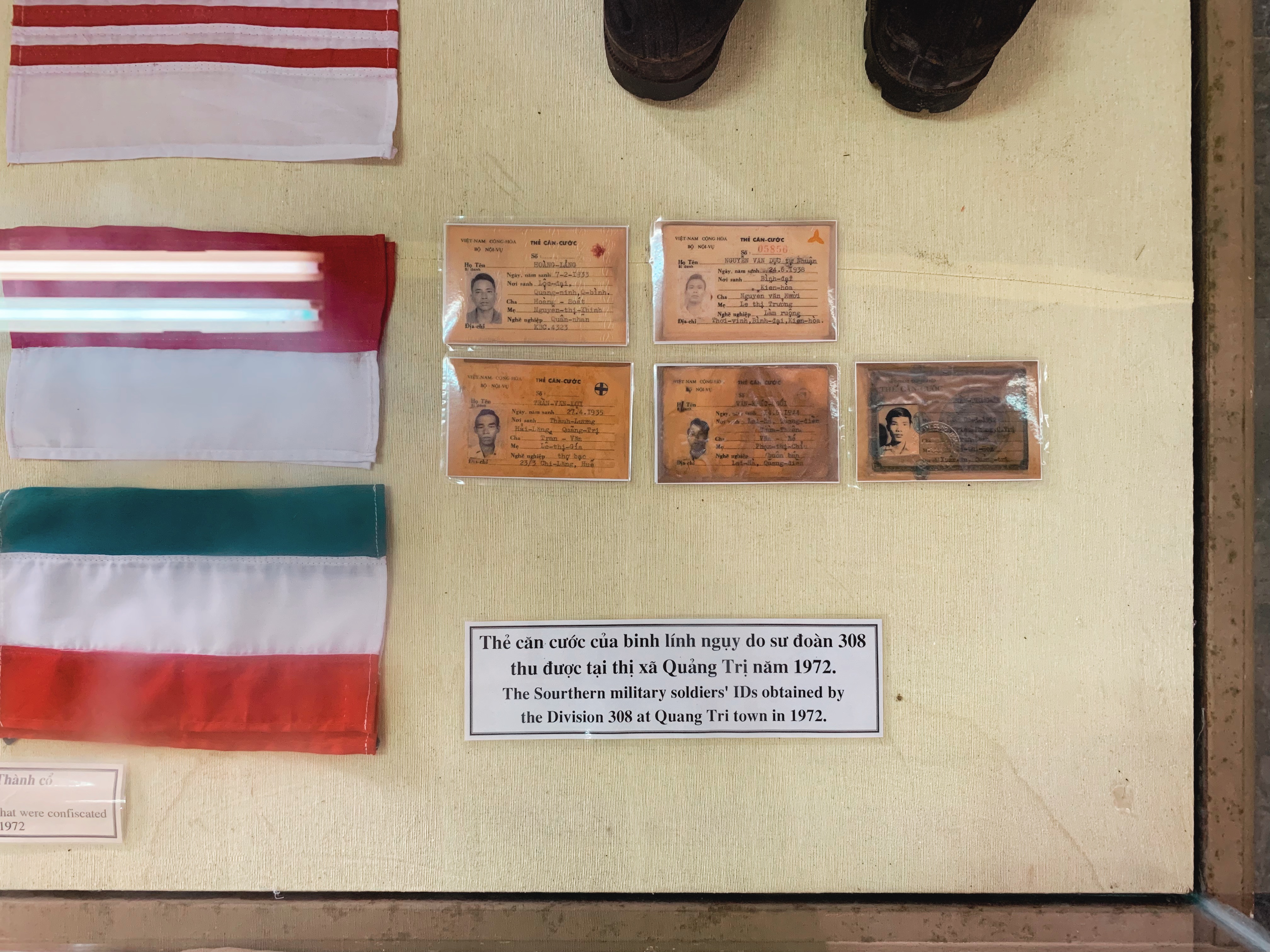
.

.

.

.
On the road from Dong Ha to Hué.
.

.

.

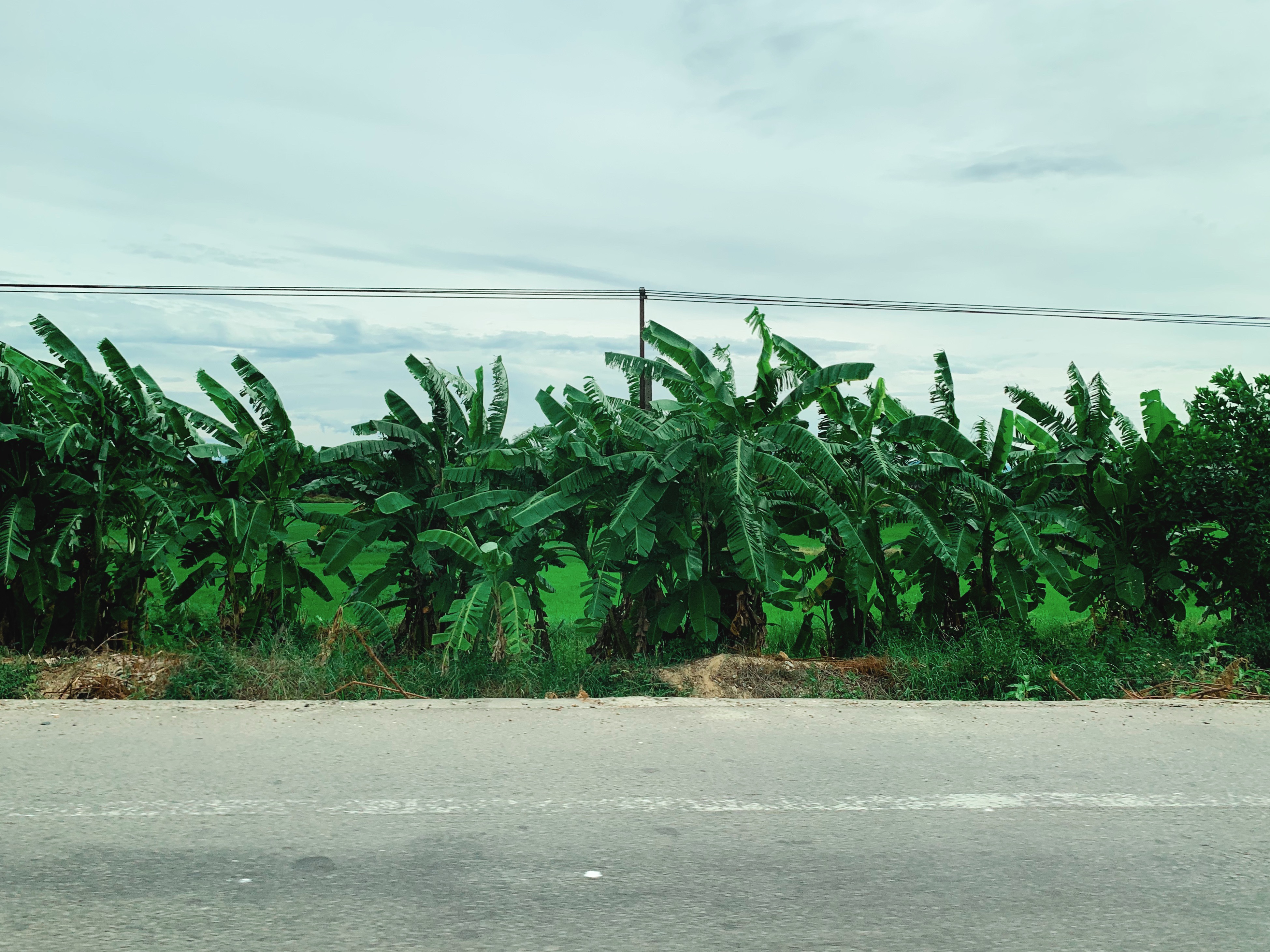
.

.

.

.
Arriving at the Thien Mu Pagoda
.

.

.

.
It was so pretty and peaceful here.

.

.

.
I got Thang back by asking for his tourist photo. Travis looking a little awkward sorry!
.
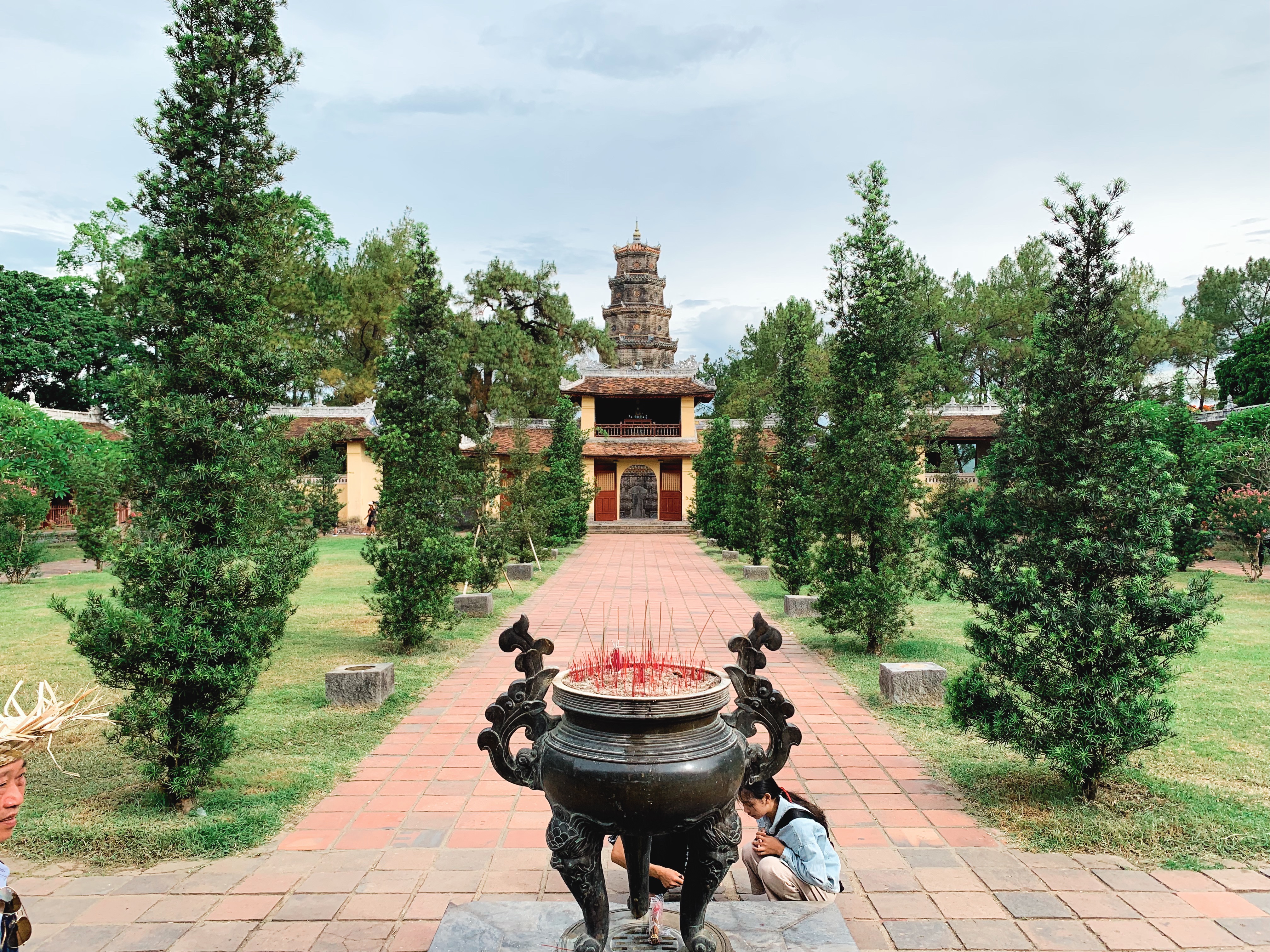
.

.
The young monks are in training to keep the gardens, which are beautiful.

.

.

“You should put in your blog that time you said you were going to have a heckers breakfast and then all you had was that tiny little pastry”
.
We spent three nights in the Old Quarter on either side of our trip to Halong Bay, and used grab taxis heaps to get to other parts of Hanoi in between. Hanoi is crazy. Four people and a dog on one scooter, 30 motorbikes crossing the intersection at once all toot-tooting at the same time kinda crazy. I guess that’s standard SEA for you but it’s still overwhelming!
.

.
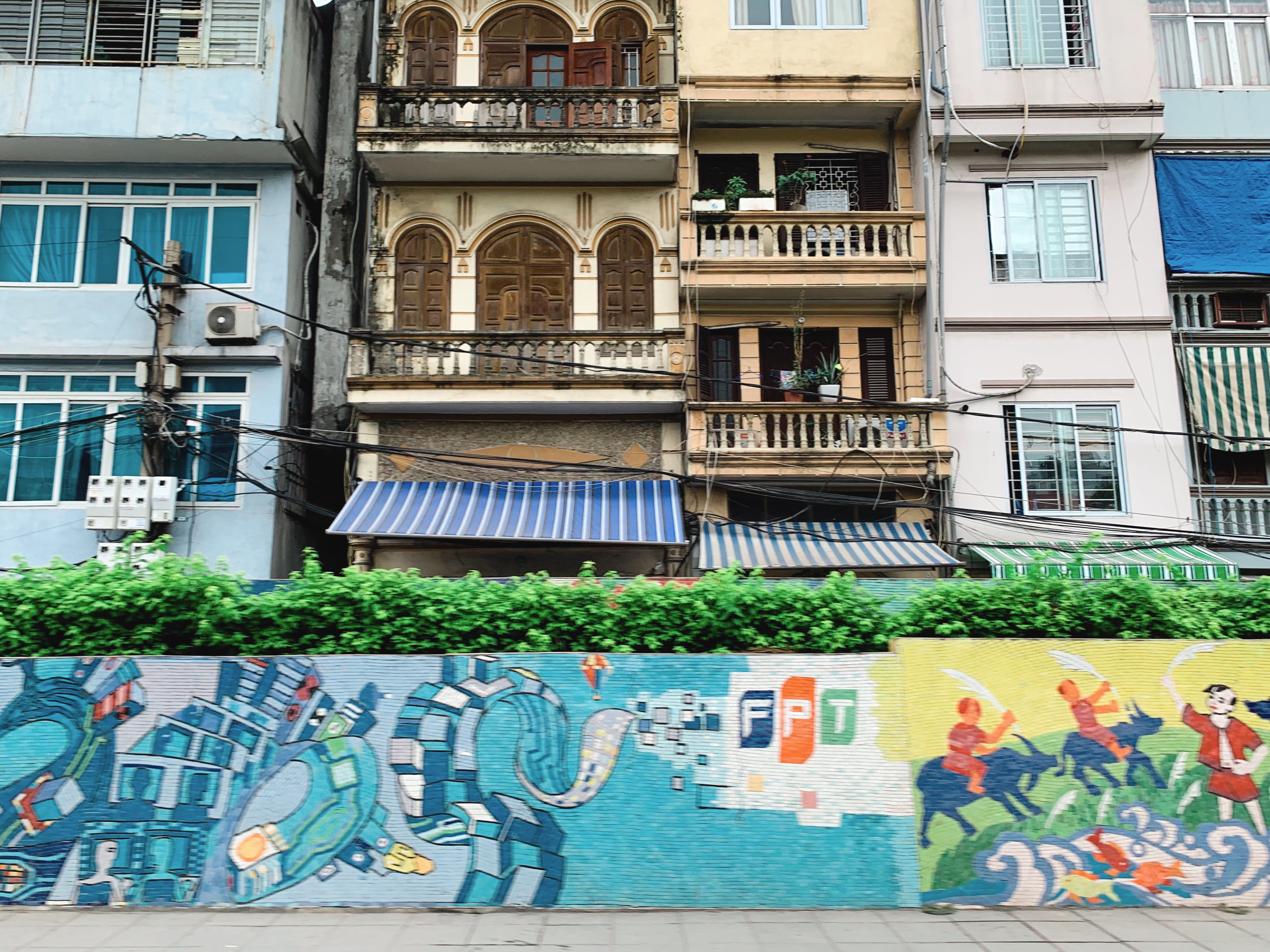
.
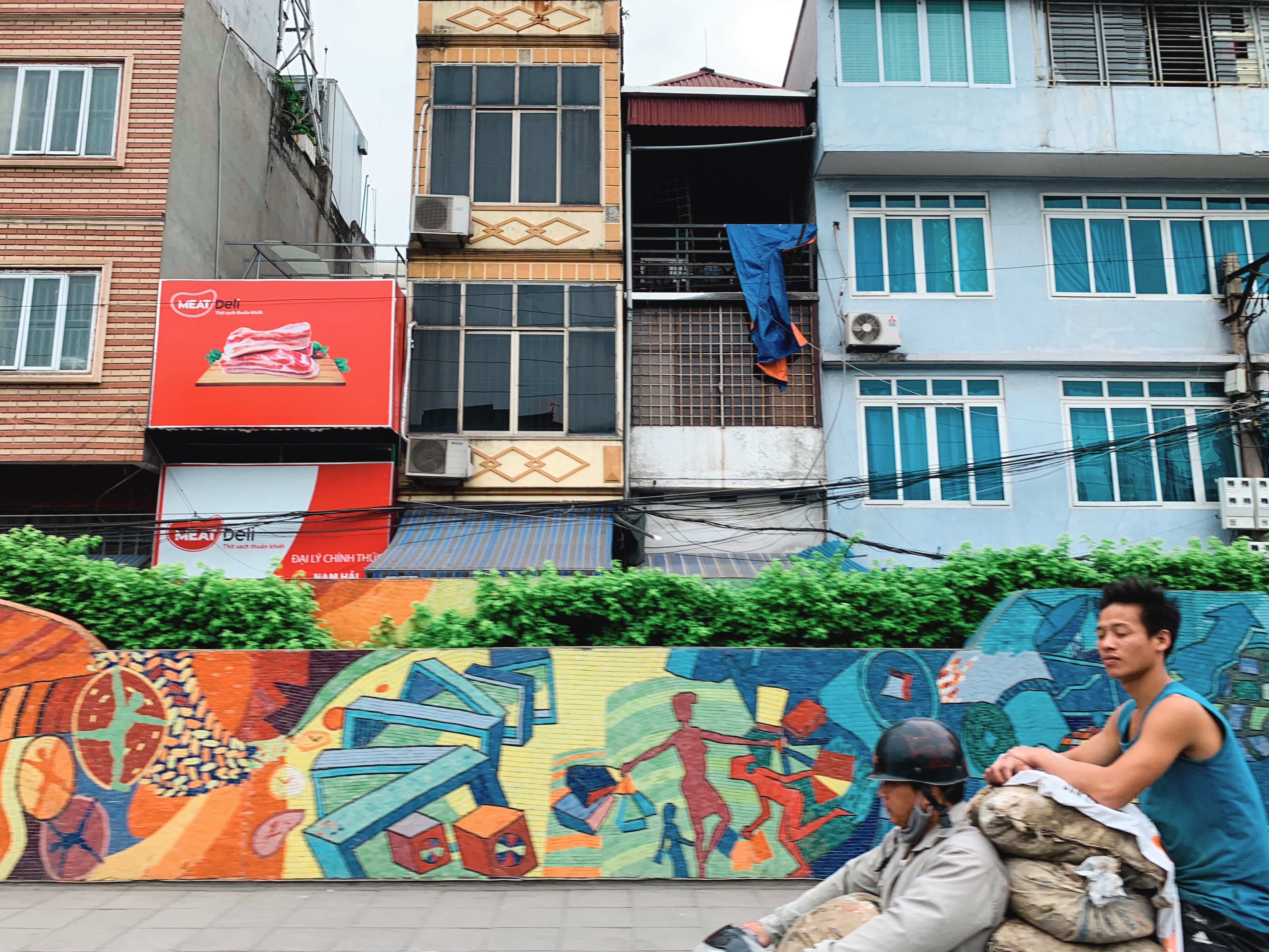
.
Houses in outer Hanoi. You can’t really tell from these pics cos they were taken on the fly but all over Hanoi they have proper trees growing from the balconies. I love looking at them- each level is kind of different and built in a different era so it’s a bit of an eclectic hodge podge of architecture, with big trees swallowing up whole levels growing from a balcony. Wikipedia says roughly 7.7 Million people live in Hanoi, but our taxi driver reckons it’s way more- so houses go up rather than out.
.

.
“Beer Corner” in the Old Quarter. This was like the best party you’ve ever been to, everyone is happy and having a good time. You buy beer and basically sit in the middle of the intersection on a little stool with 100 other people. They close off the road at night but you’ll see the odd scooter anyway. Damn this place was amazing, it felt so free and fun and good!
.

.
So this intersection is dense with foot traffic and little plastic stools on the side of the road down each lane for as far as you can see. Beer is cheap and ice cold, and the general vibe is happy fun wind down at the end of a hot day (it’s been 35-38C and 70% humidity).
.
.

.
Vietnam National History Museum from the outside. During the day we visited here. Heaps of incredible artefacts and information about ancient wars (excluding the two 20th century wars).
.

.
Close up of the Strangling Fig
.
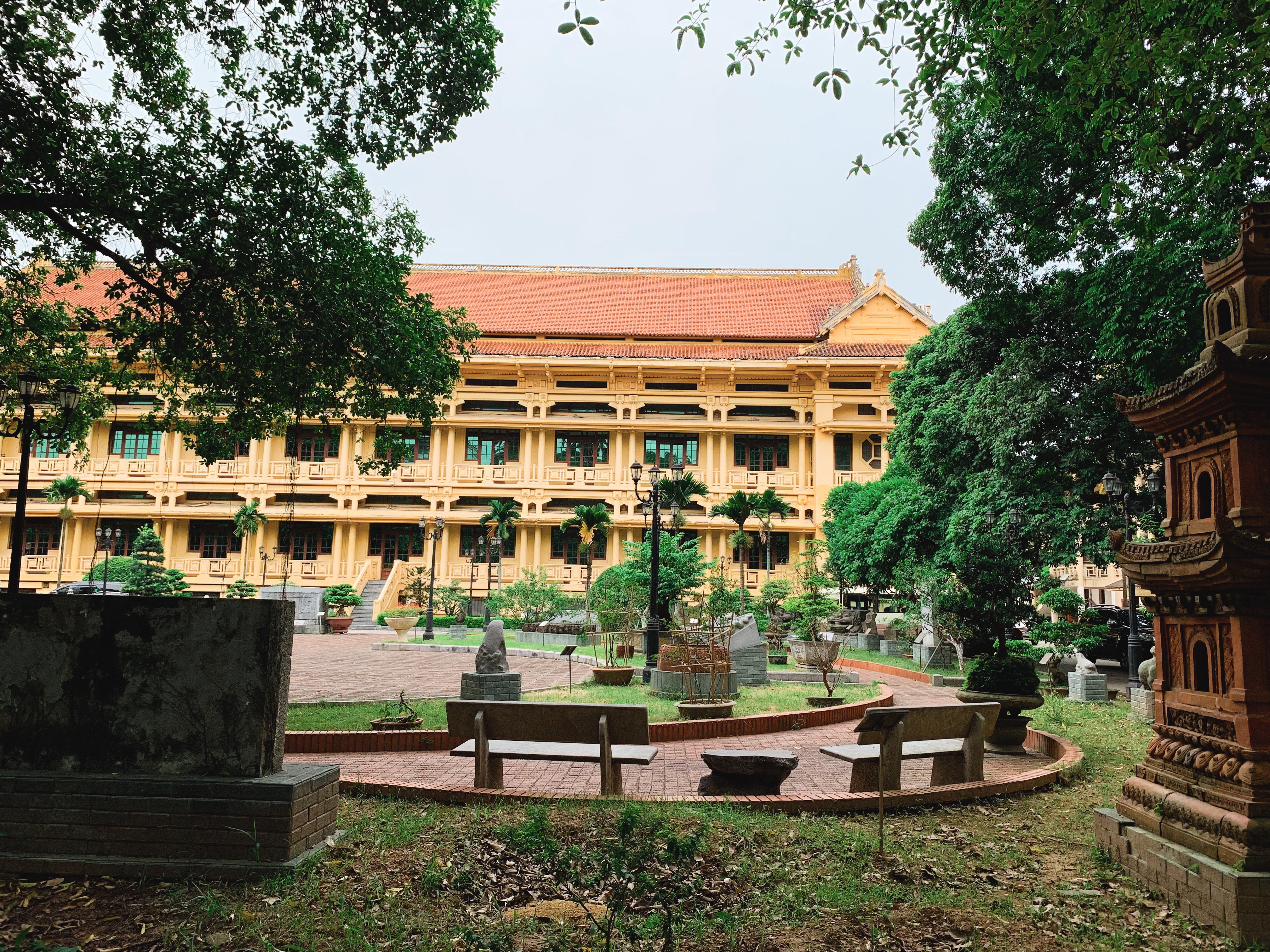
.

.

.
The Vietnam Military History Museum is all about the first Indochina War 1946-1954. It was incredible. As well as artefacts from the war, they have a really great recreation of the war and strategies of both sides in this giant diorama and documentary.
.

.

.

.

.
So, the first museum we visited (Vietnam National History Museum) covered a lot of history of Vietnam from eastern antiquity, there are ancient tools, weapons, clothes, art, pottery and human remains. They also have heaps of information about all of the wars Vietnam has been involved in. I didn’t know this before, but Vietnam seems to be a magnet for colonial invasion, everyone seems to have had a go- the Chinese, the Dutch, Cambodia, Laos, the Mongols…
The Military Museum gave us a more in depth walkthrough of the first Indochina War and Vietnam’s independence from France. There’s a museum in Ho Chi Minh City about the Vietnam War (Second Indochina War) that I’m really looking forward to seeing.
.

After all that museuming we had Bùn Chà (pork & noodles in sweet spicy vinegar broth) at the same place Obama and Anthony Bourdain ate at. You can tell because they have preserved the table they ate at in glass like at a museum.
.
Food we ate in Hanoi:
.

.